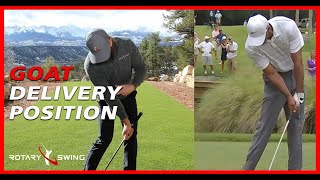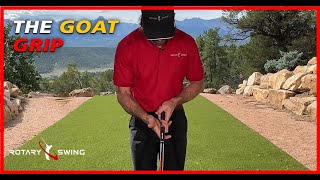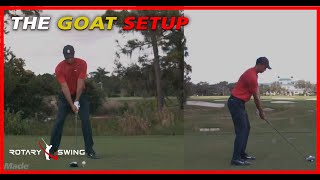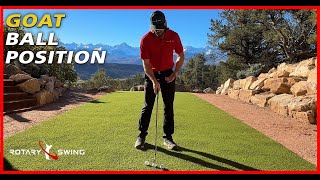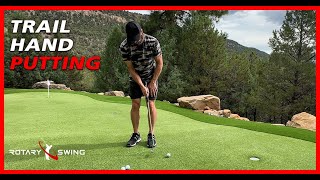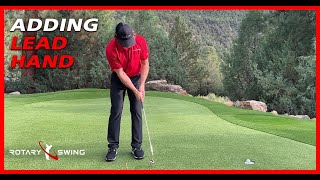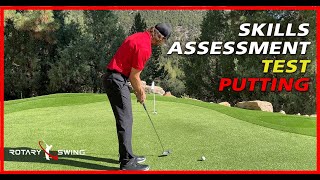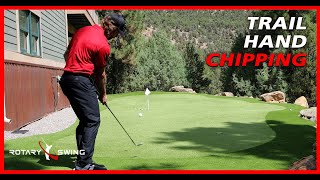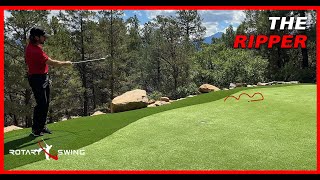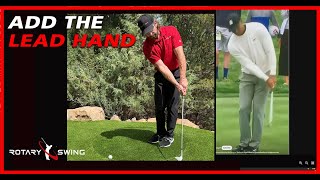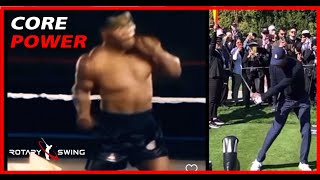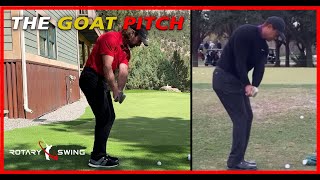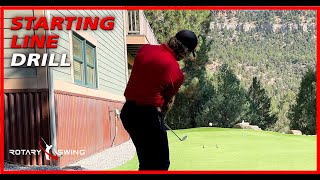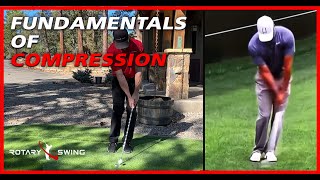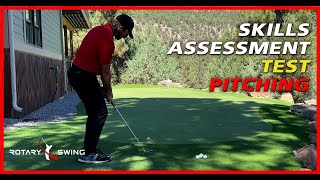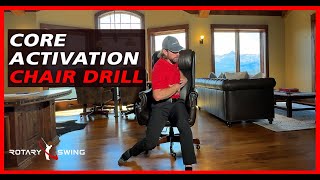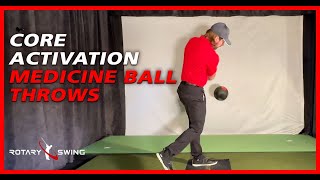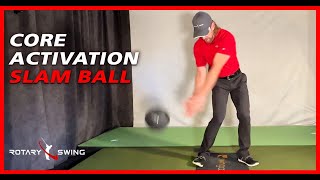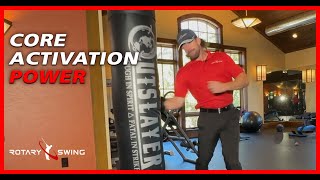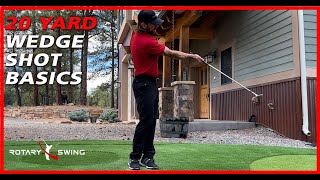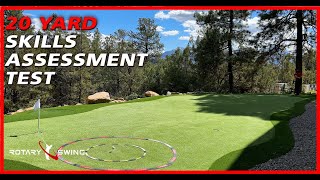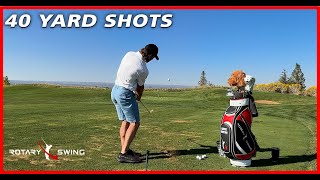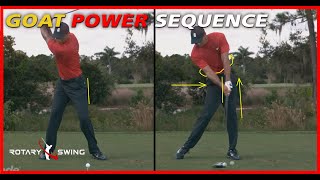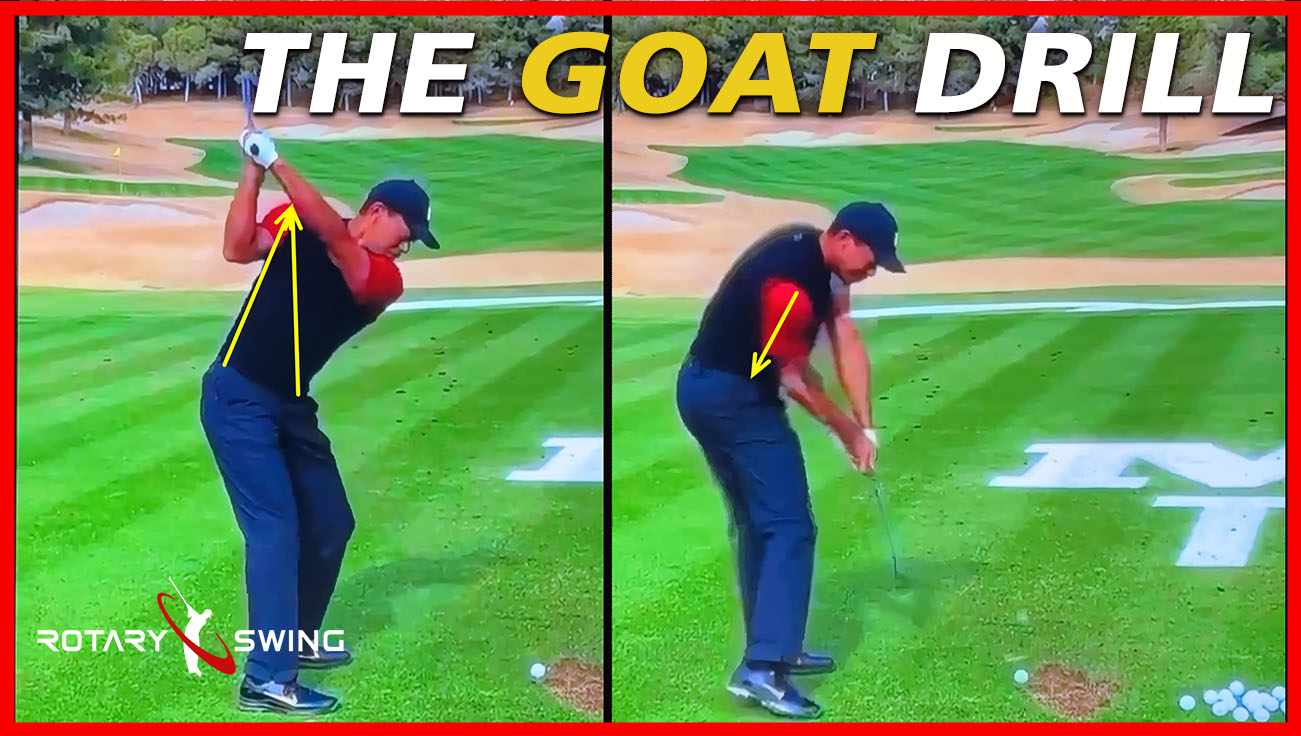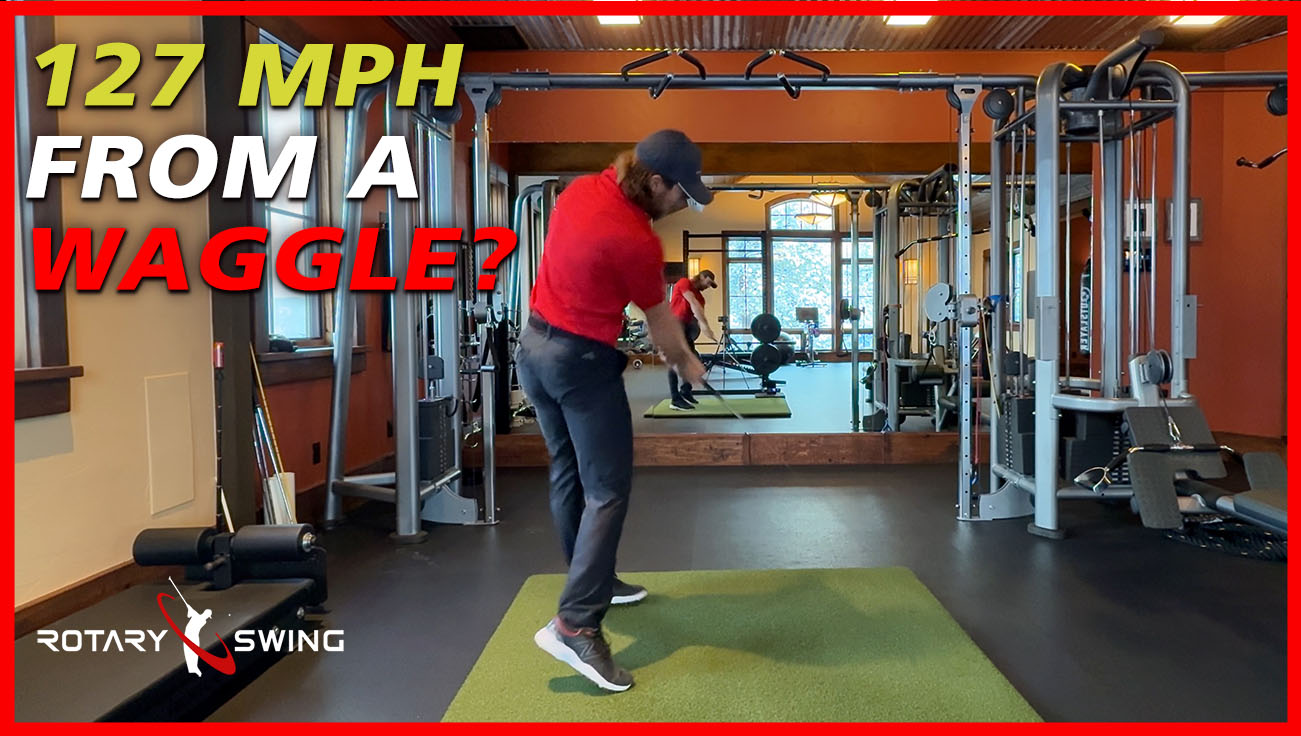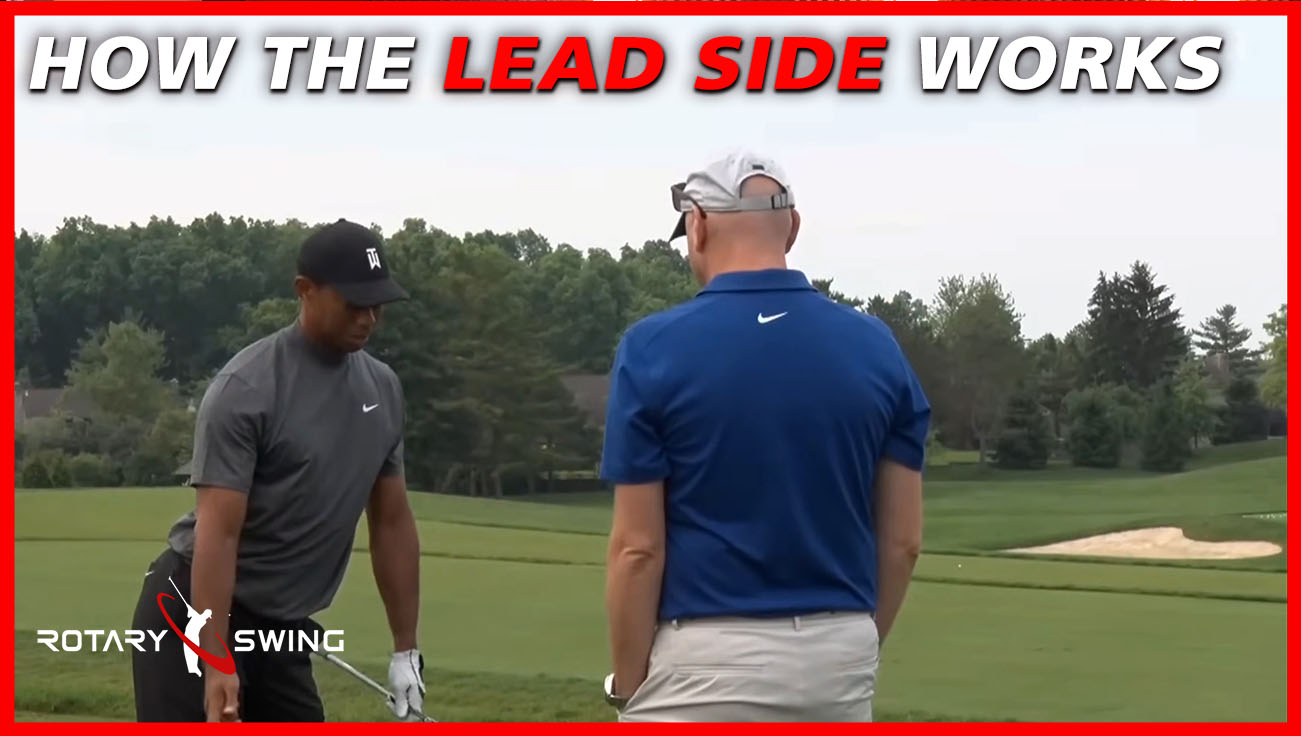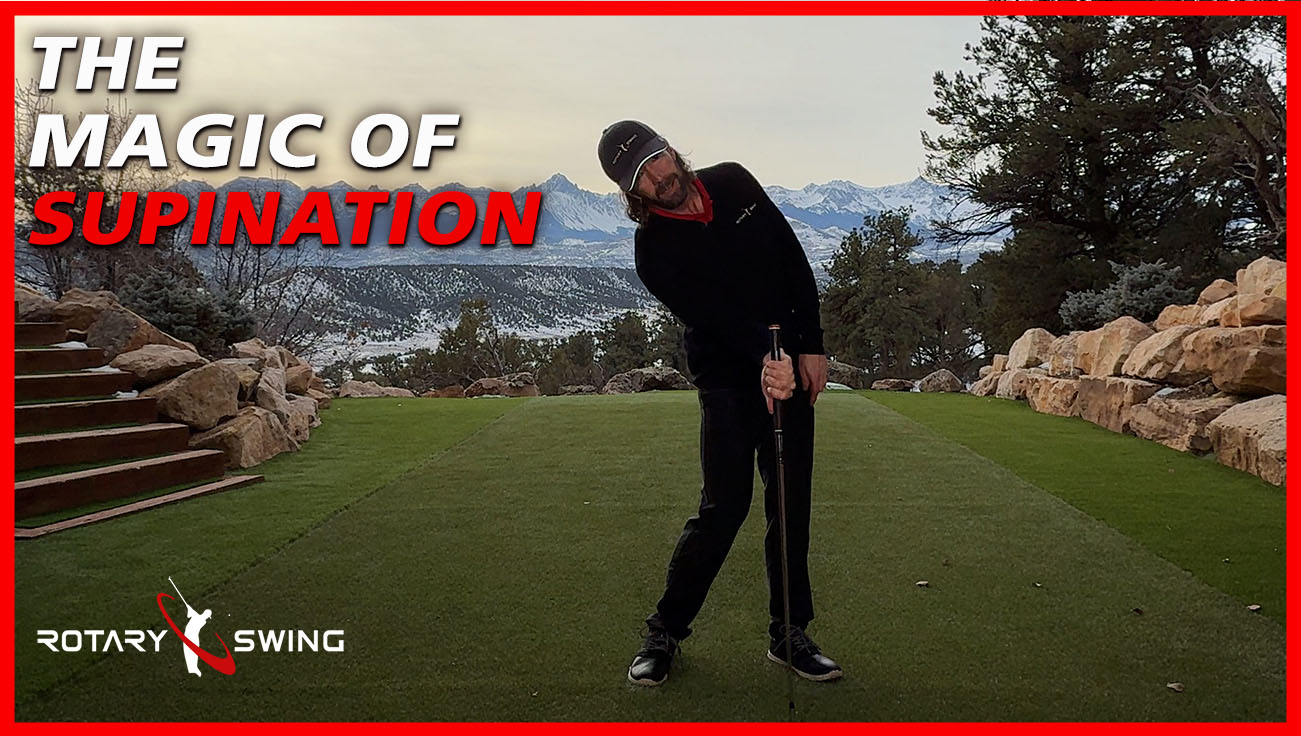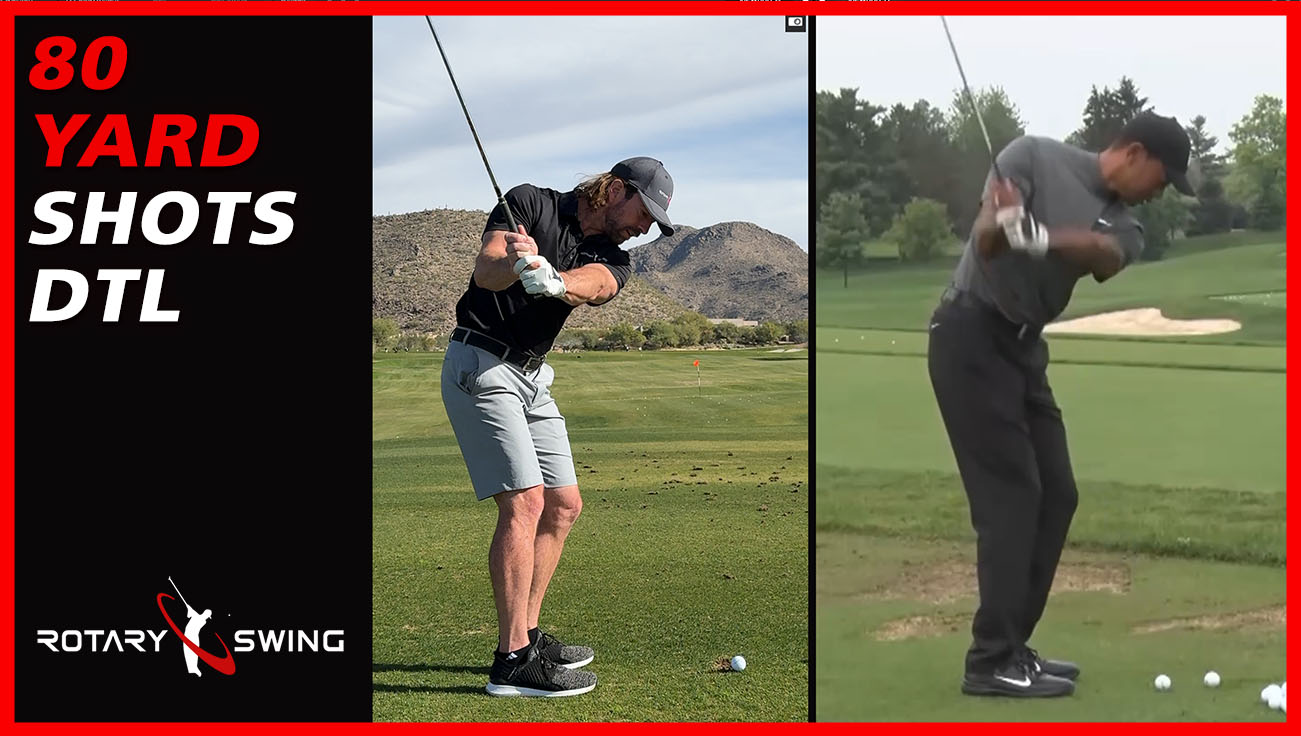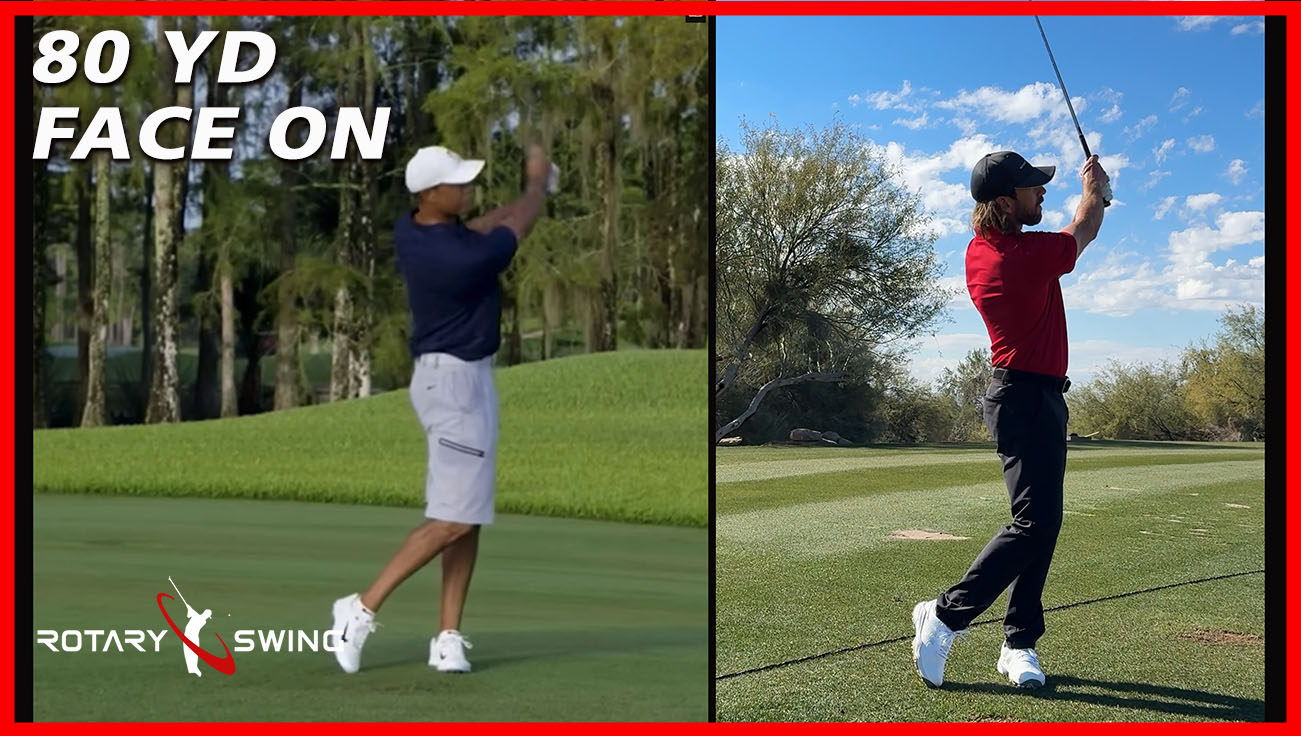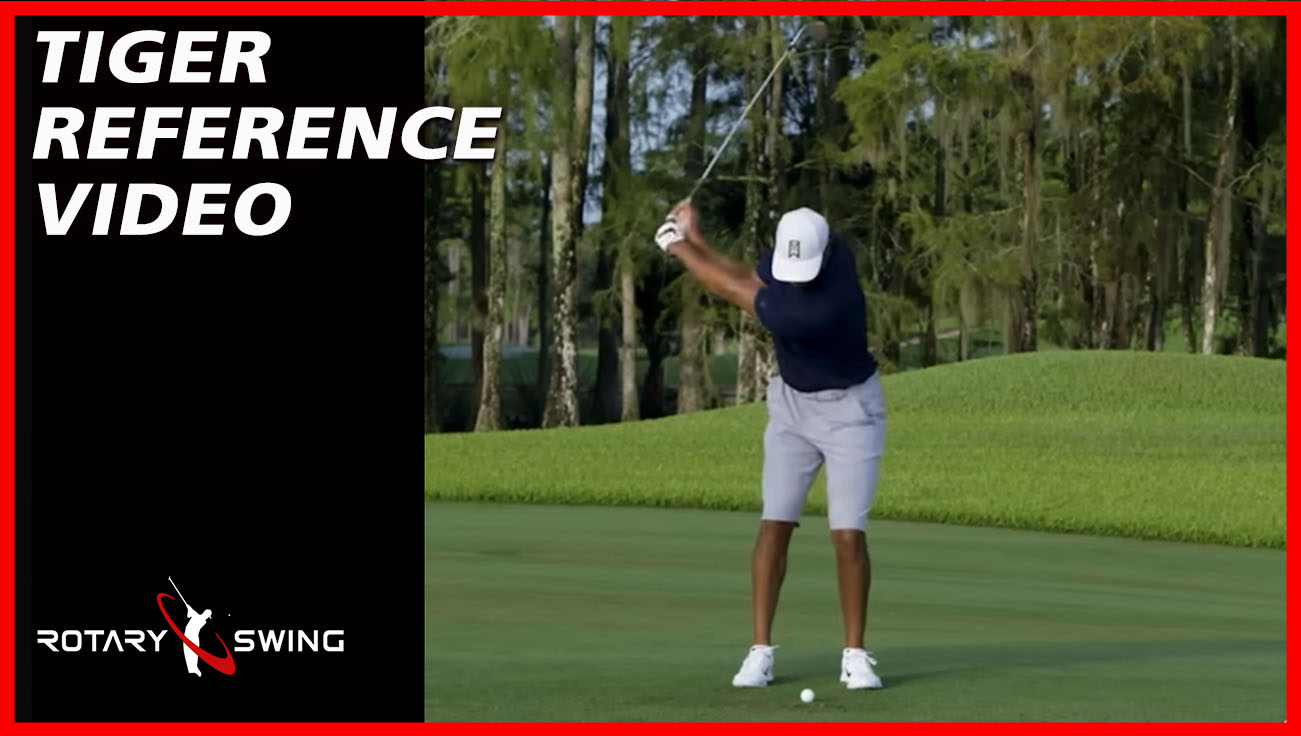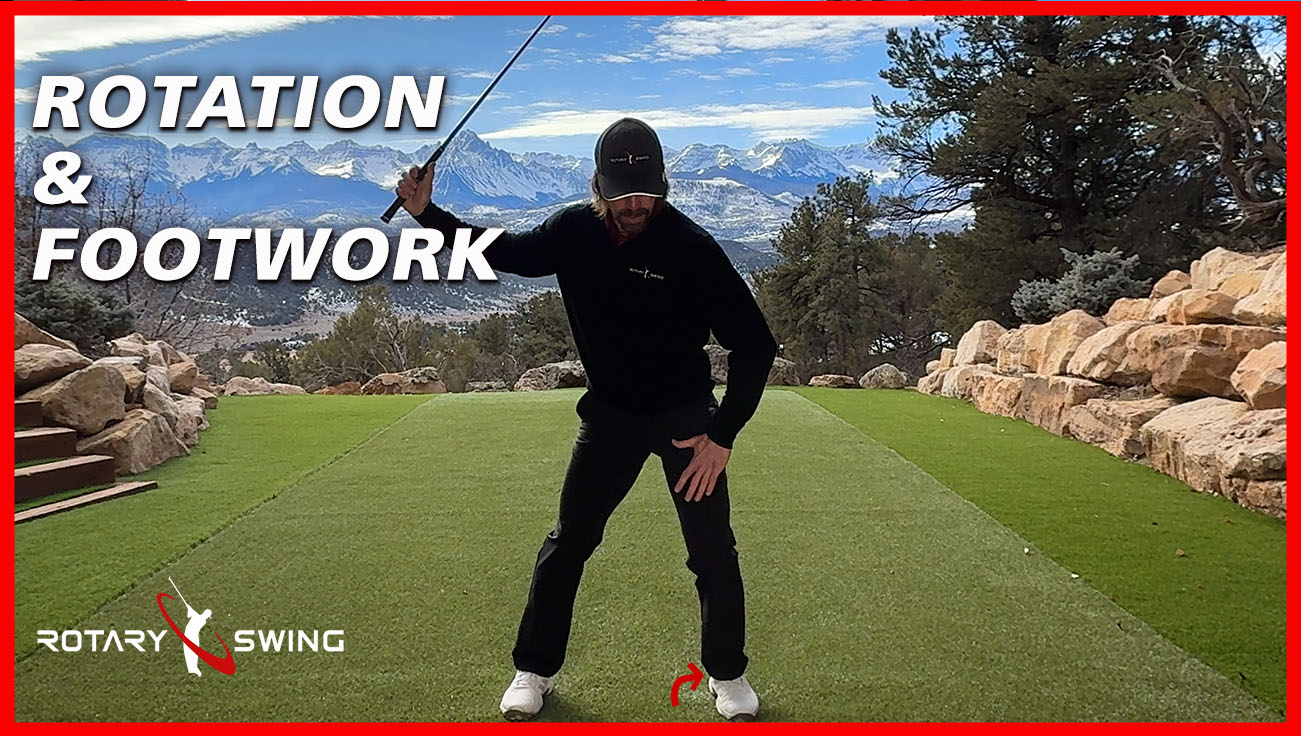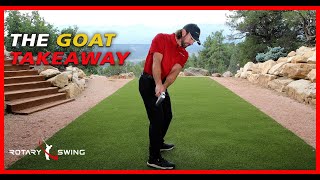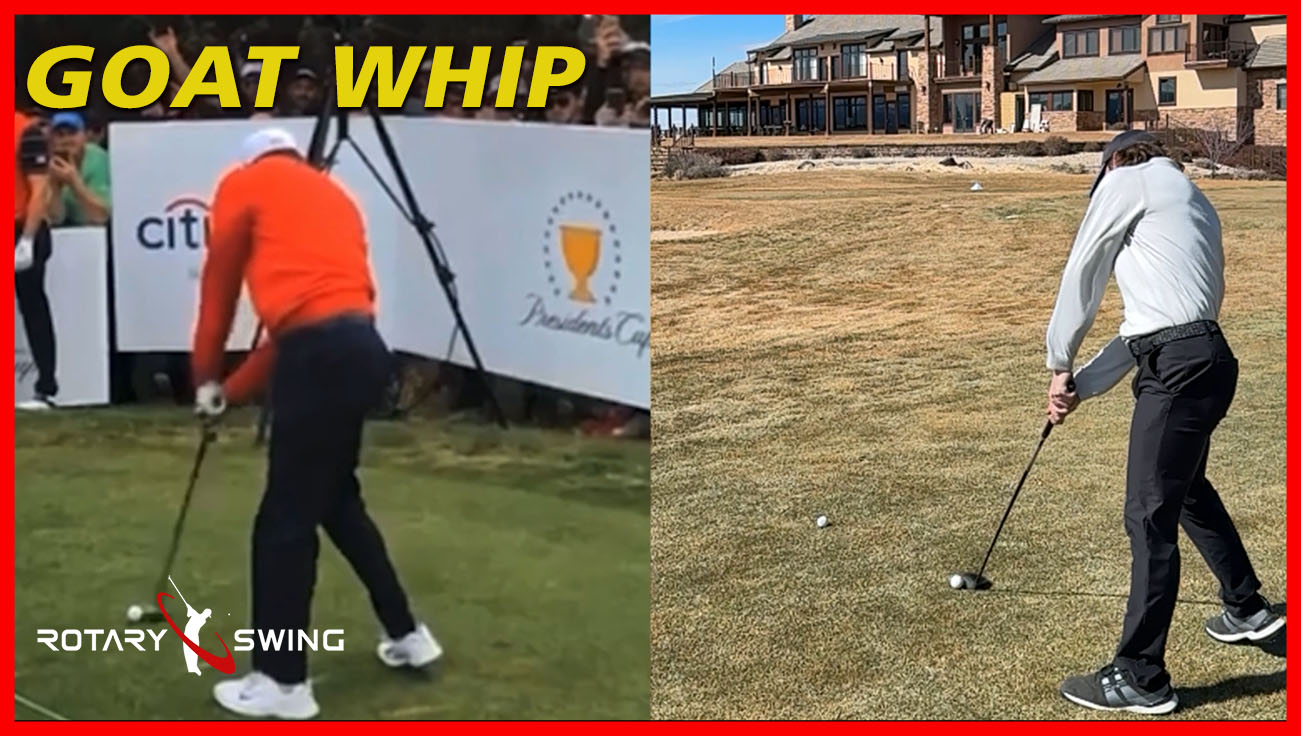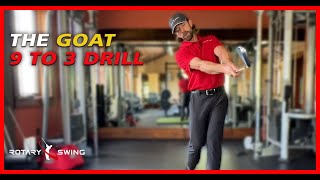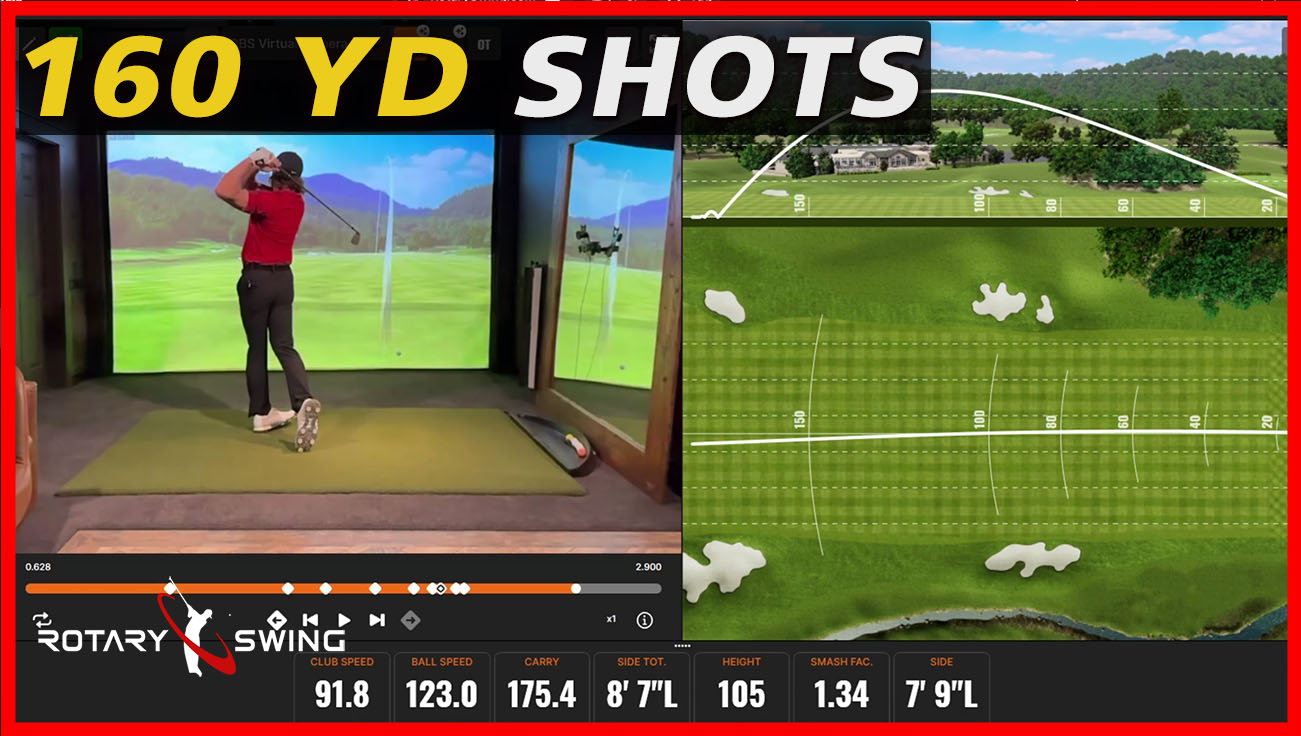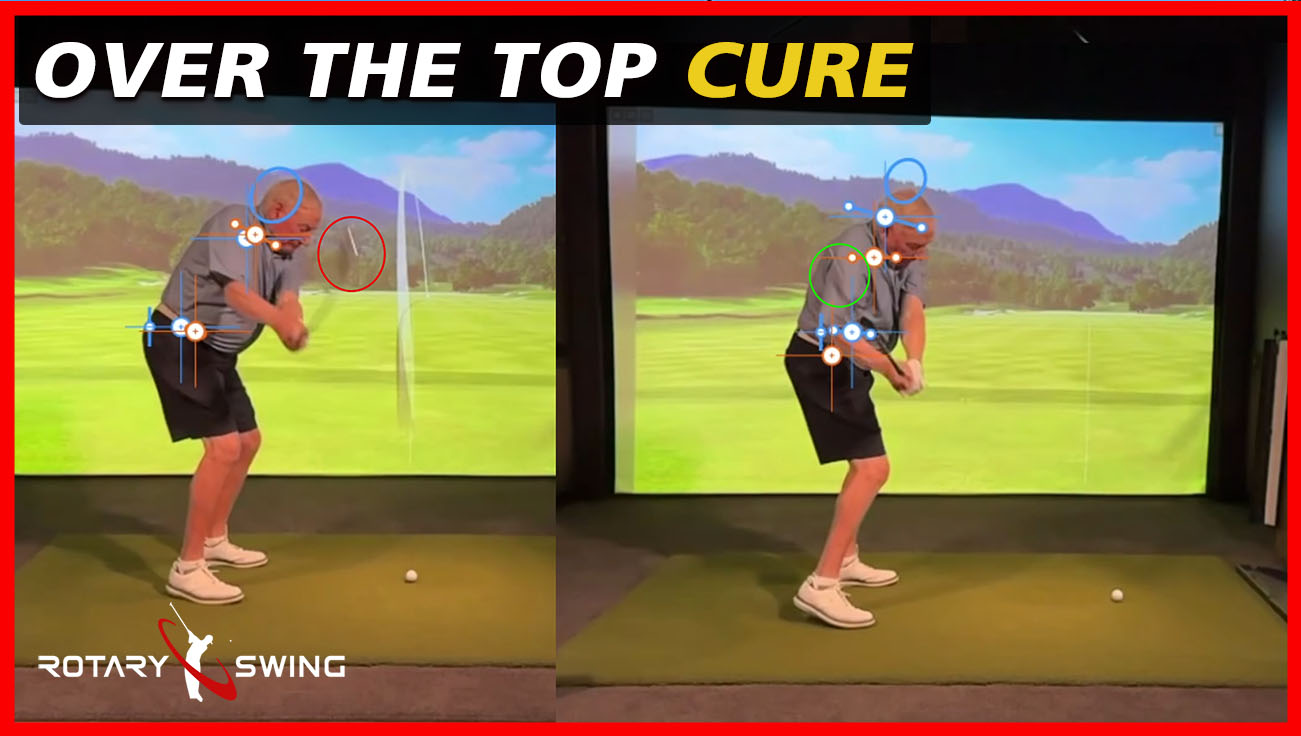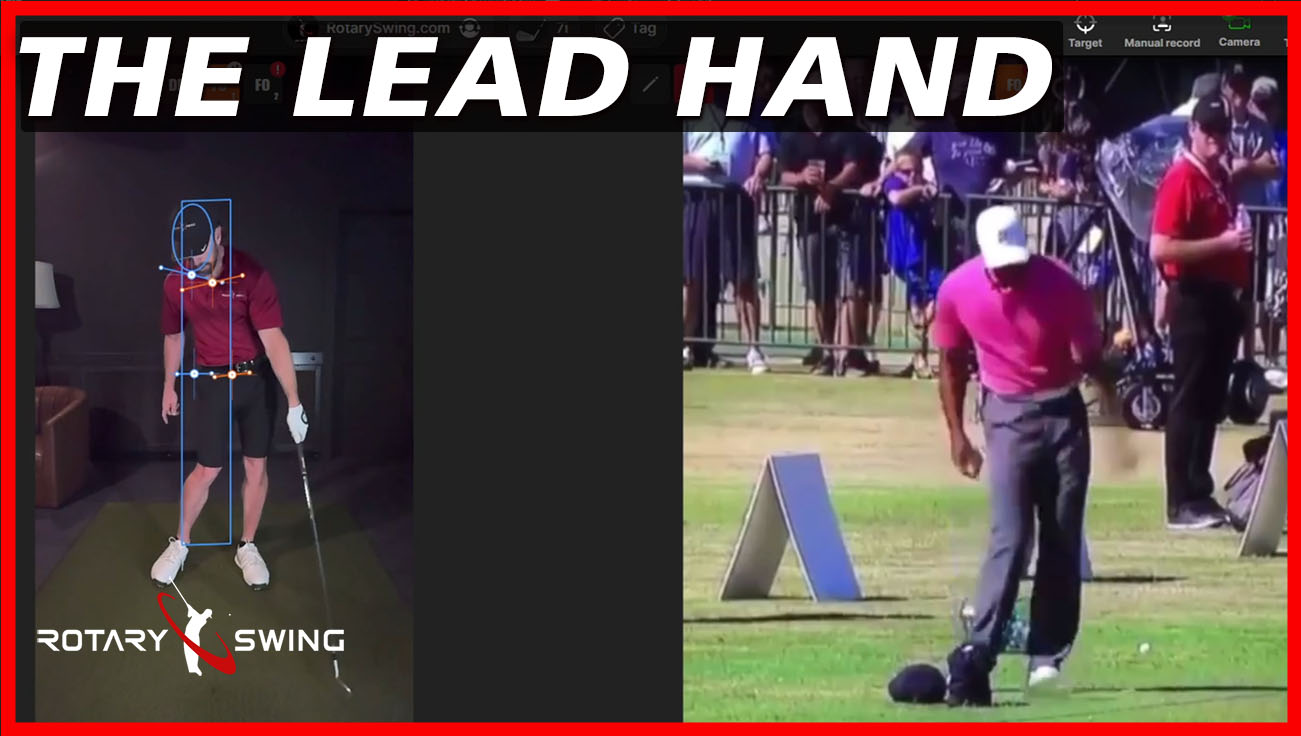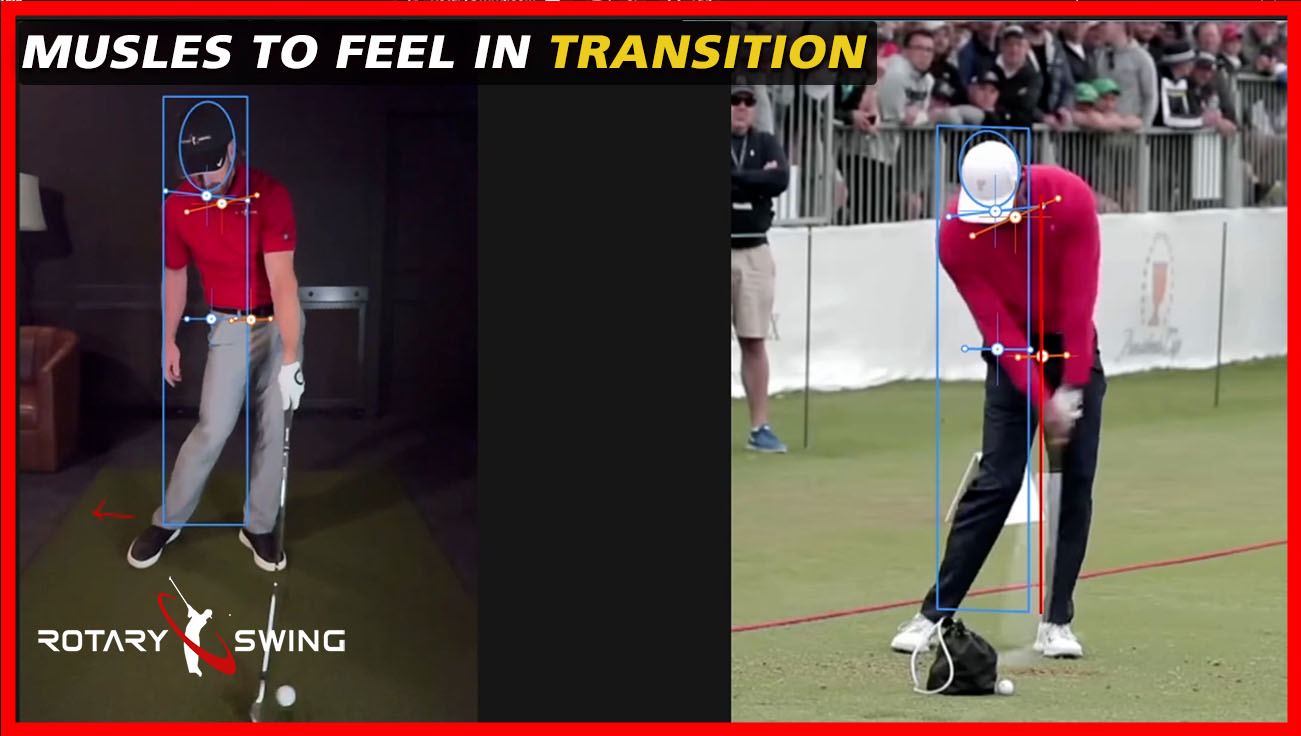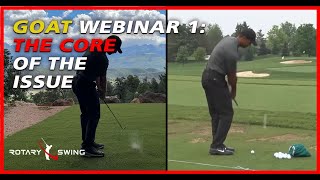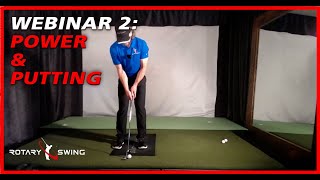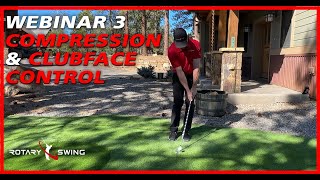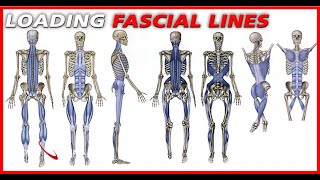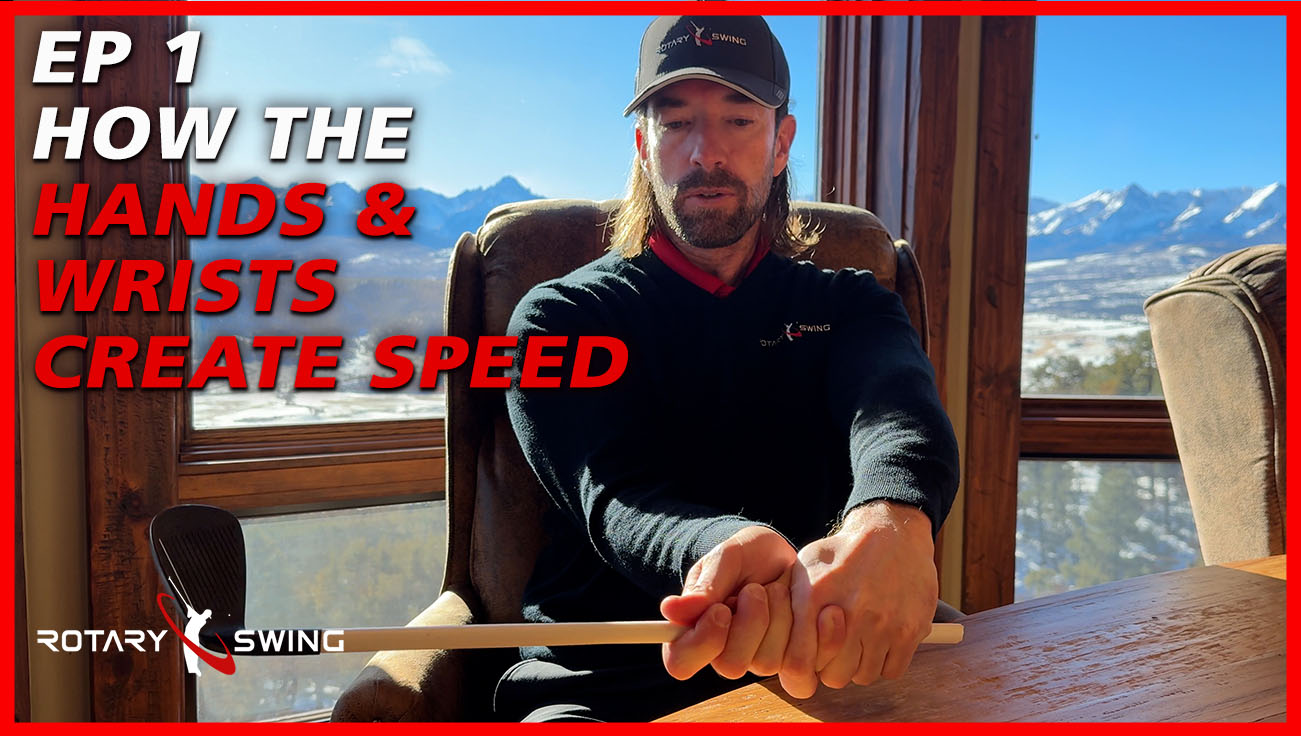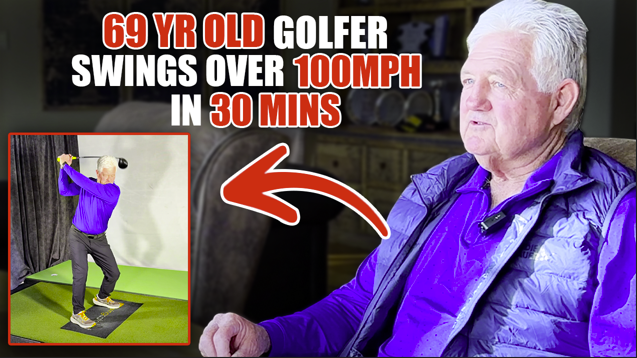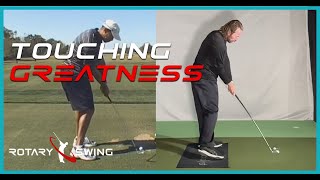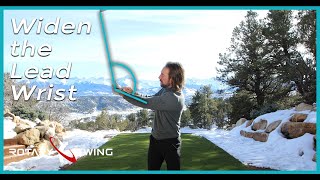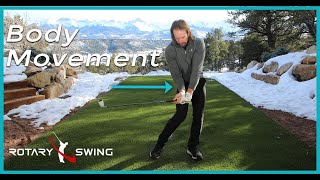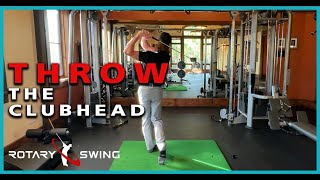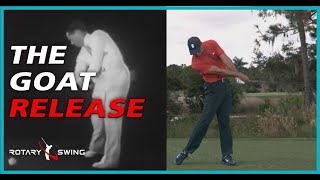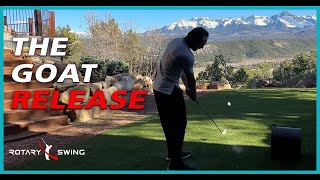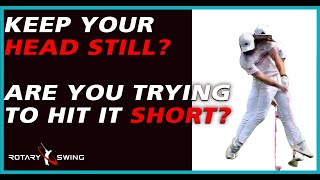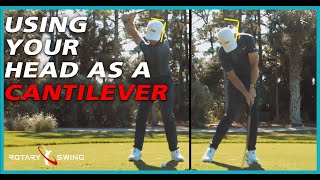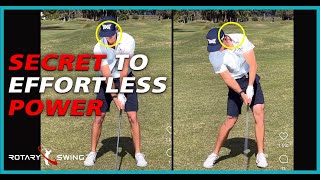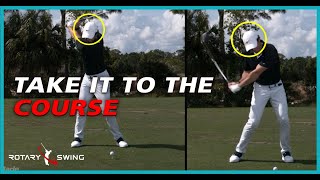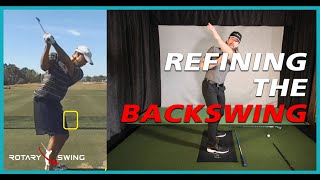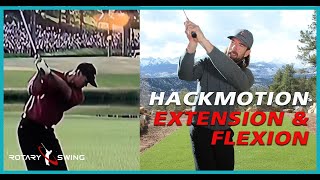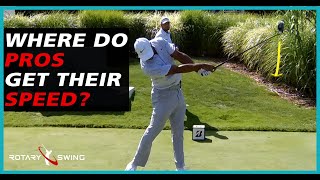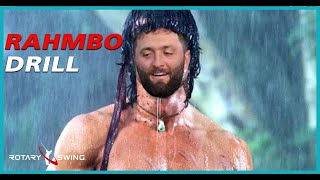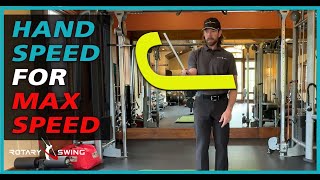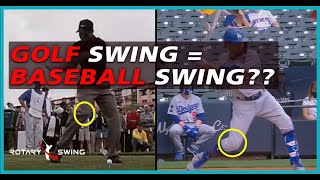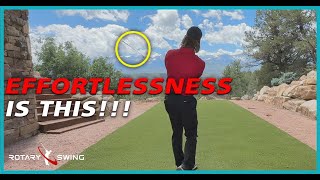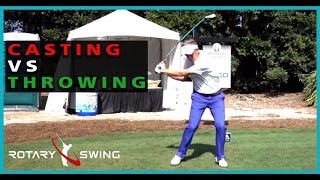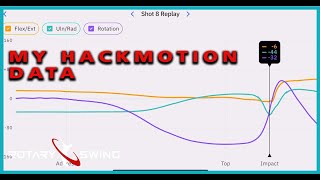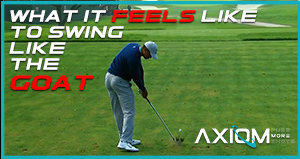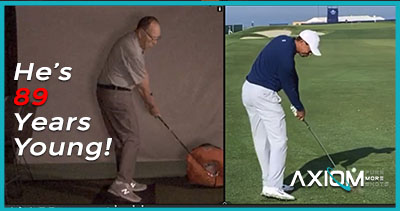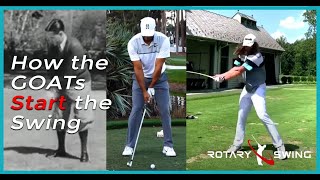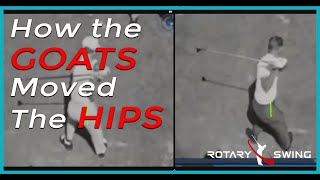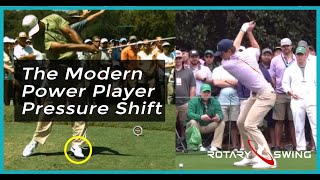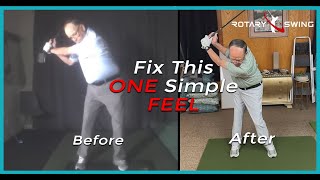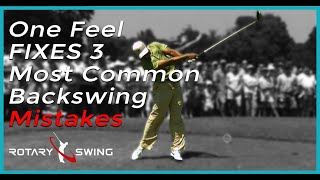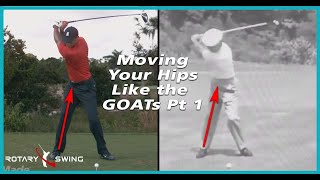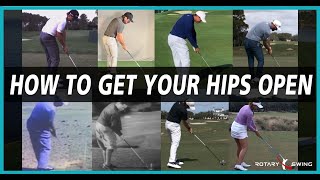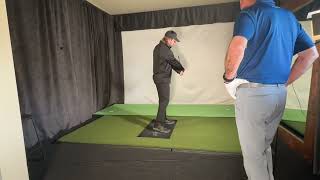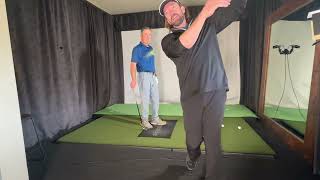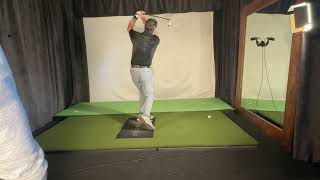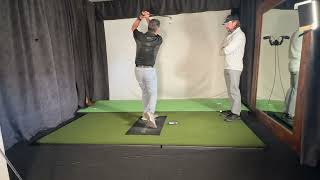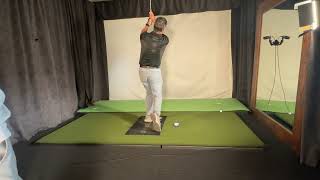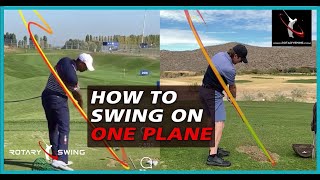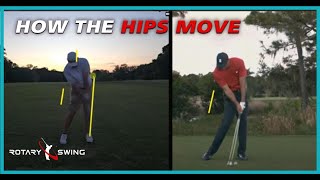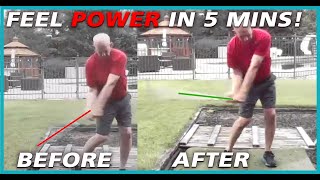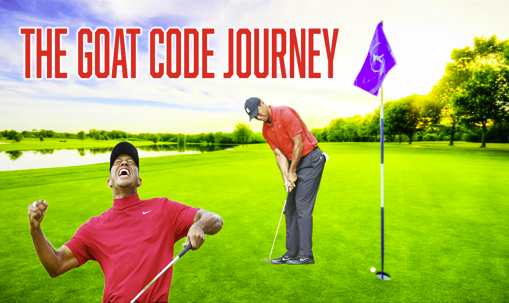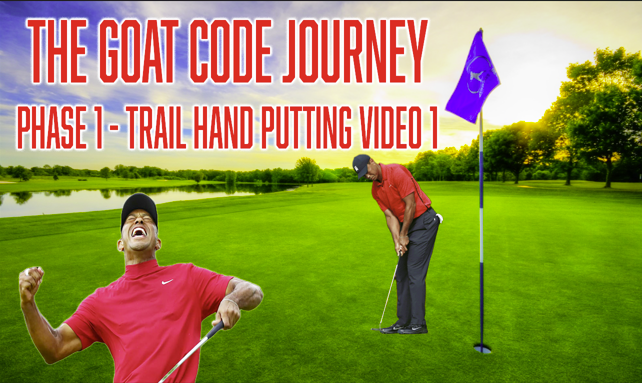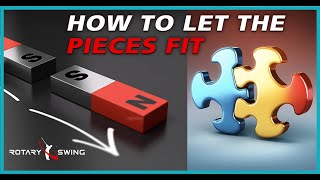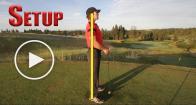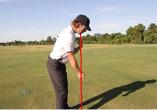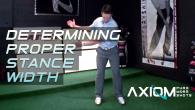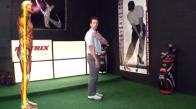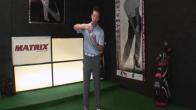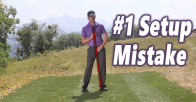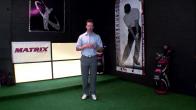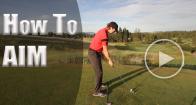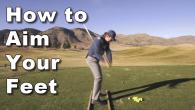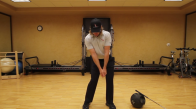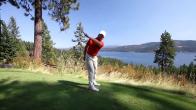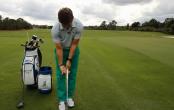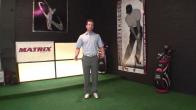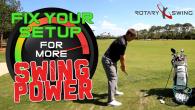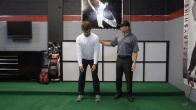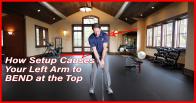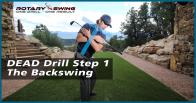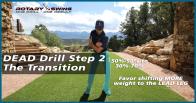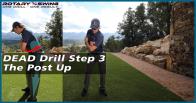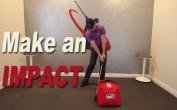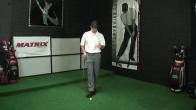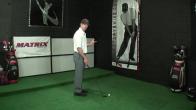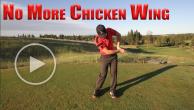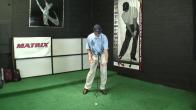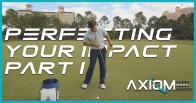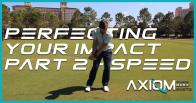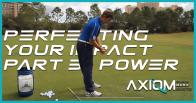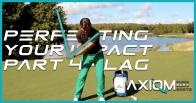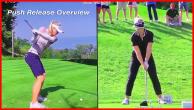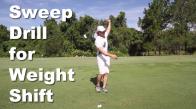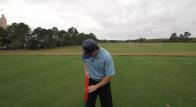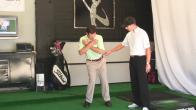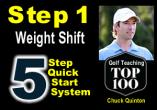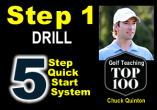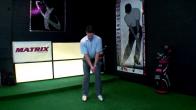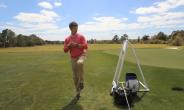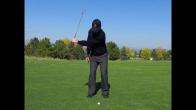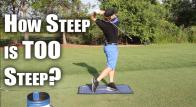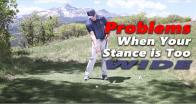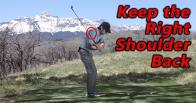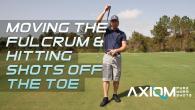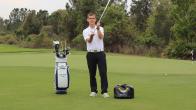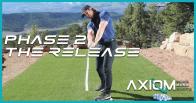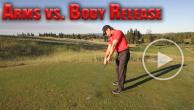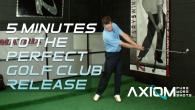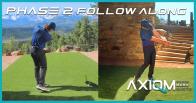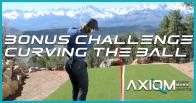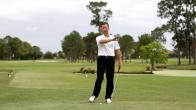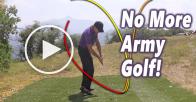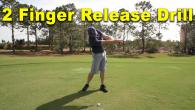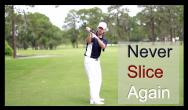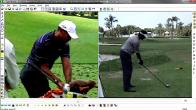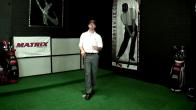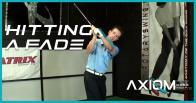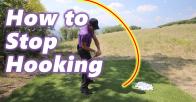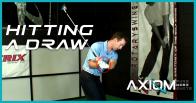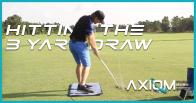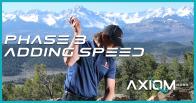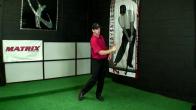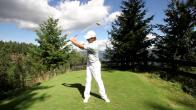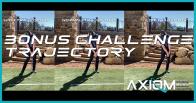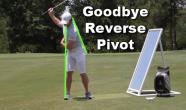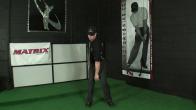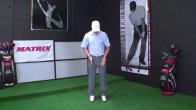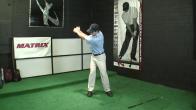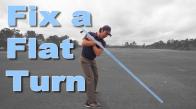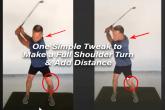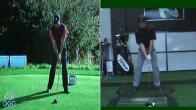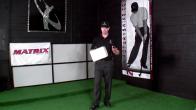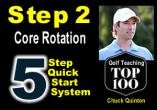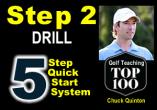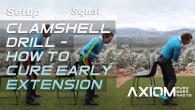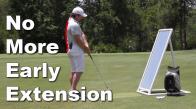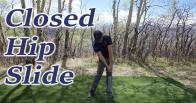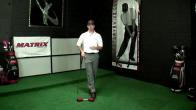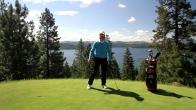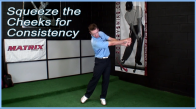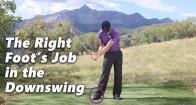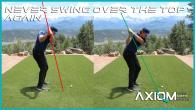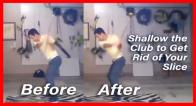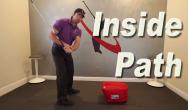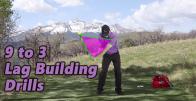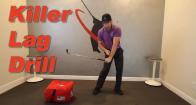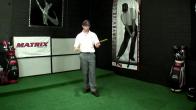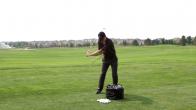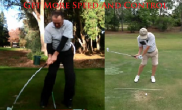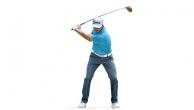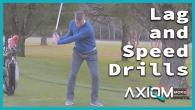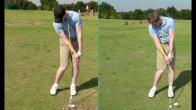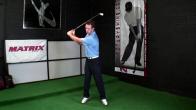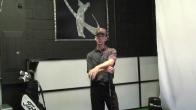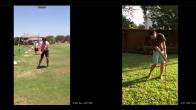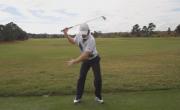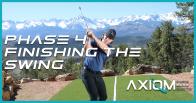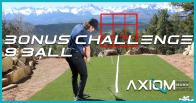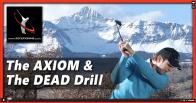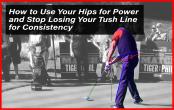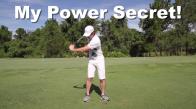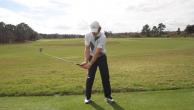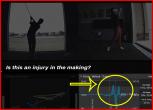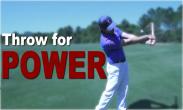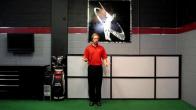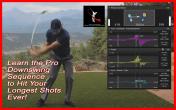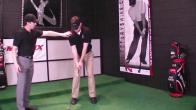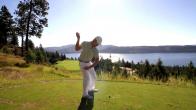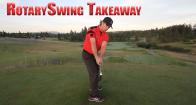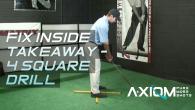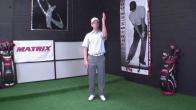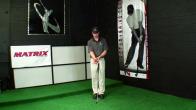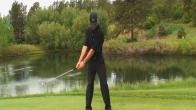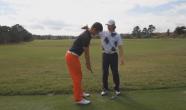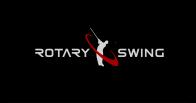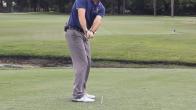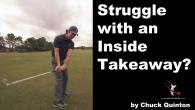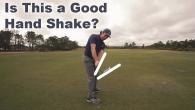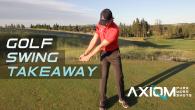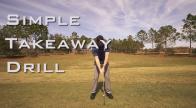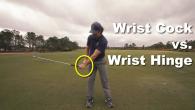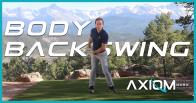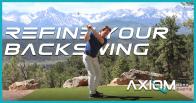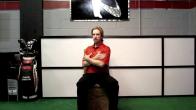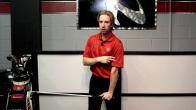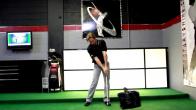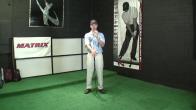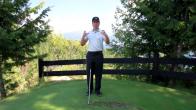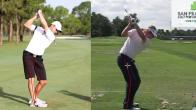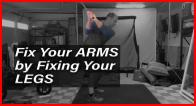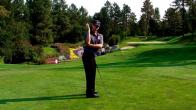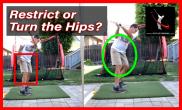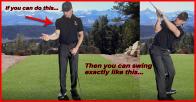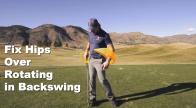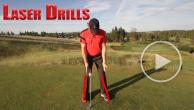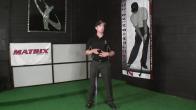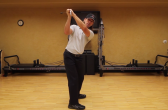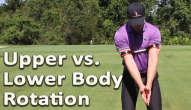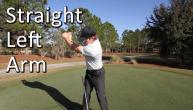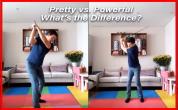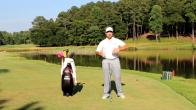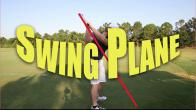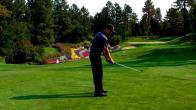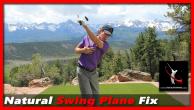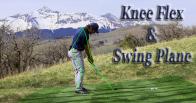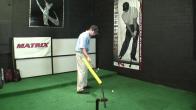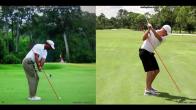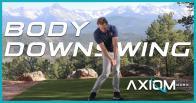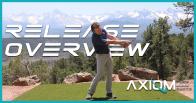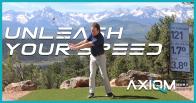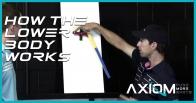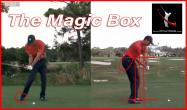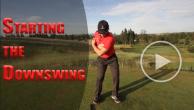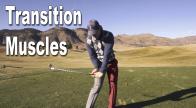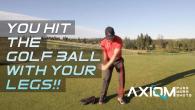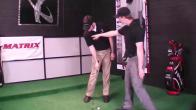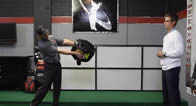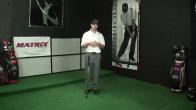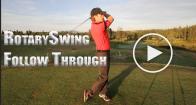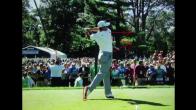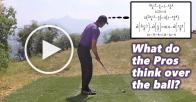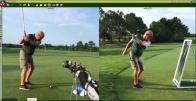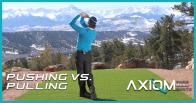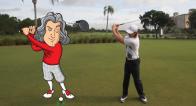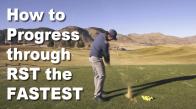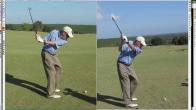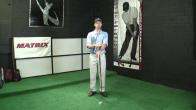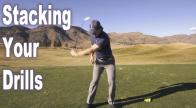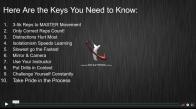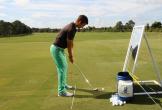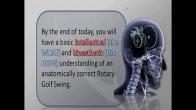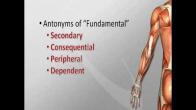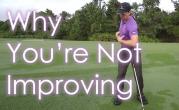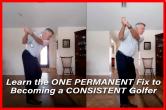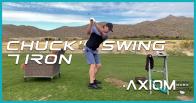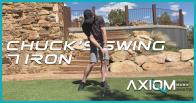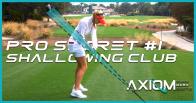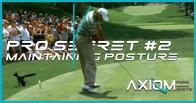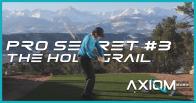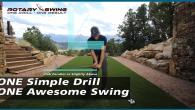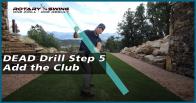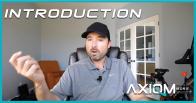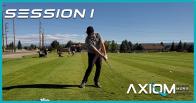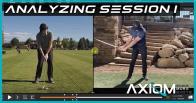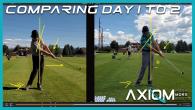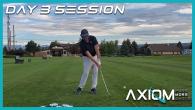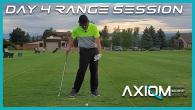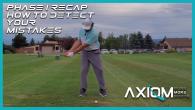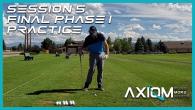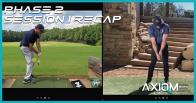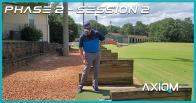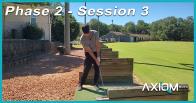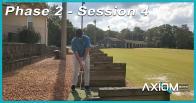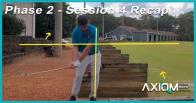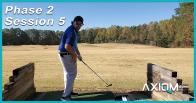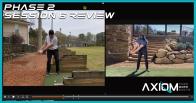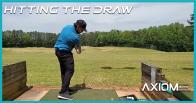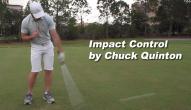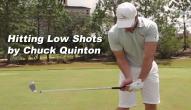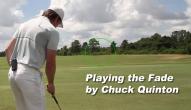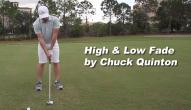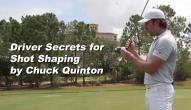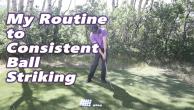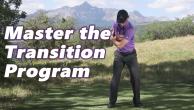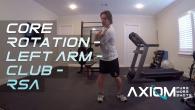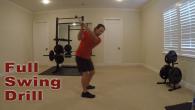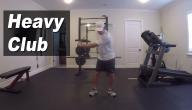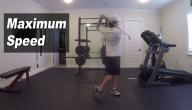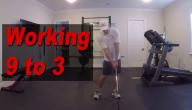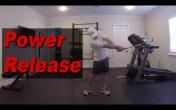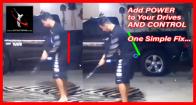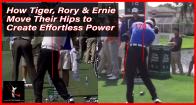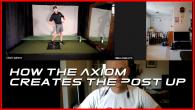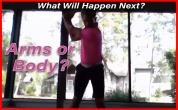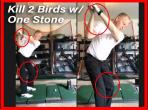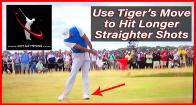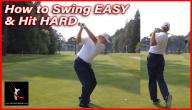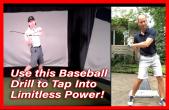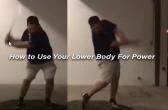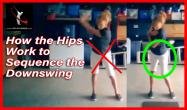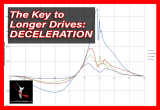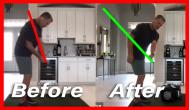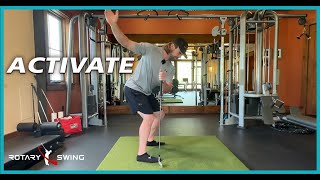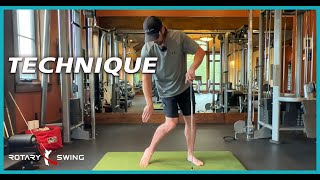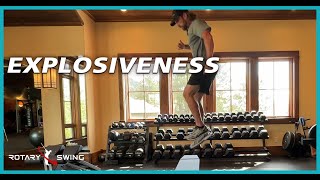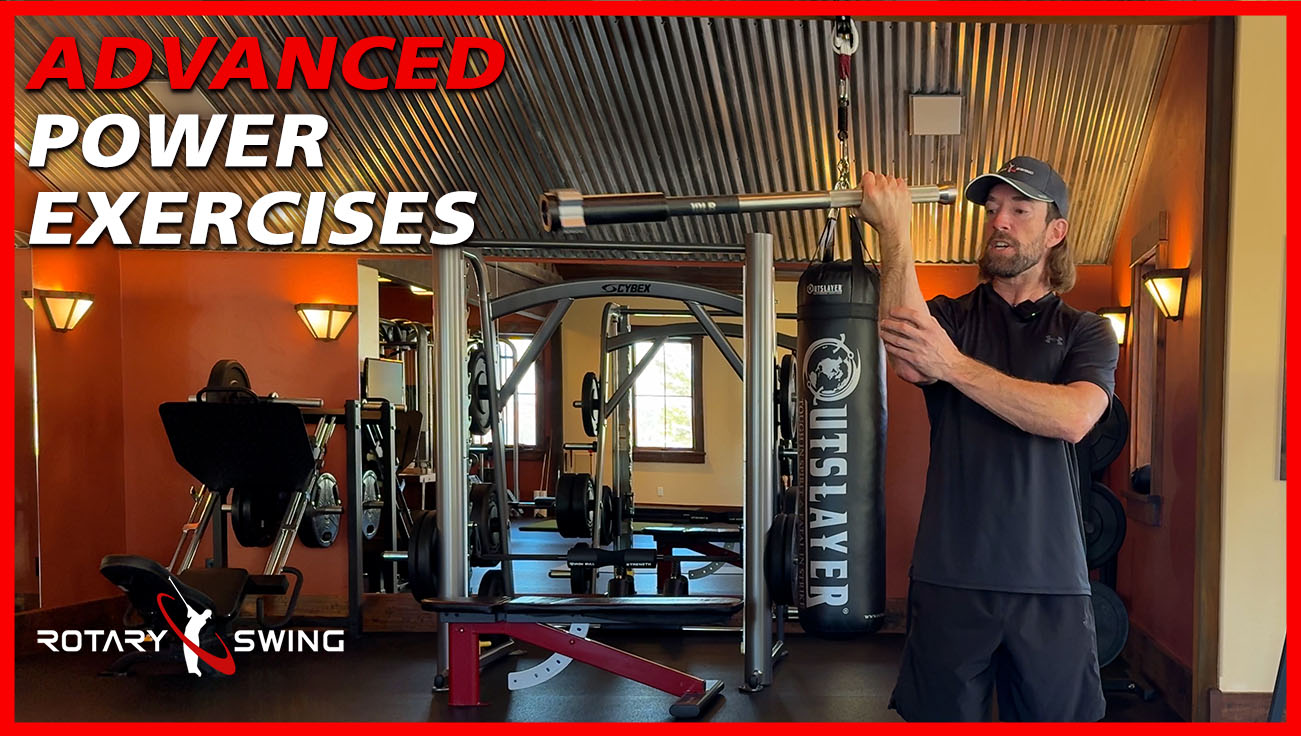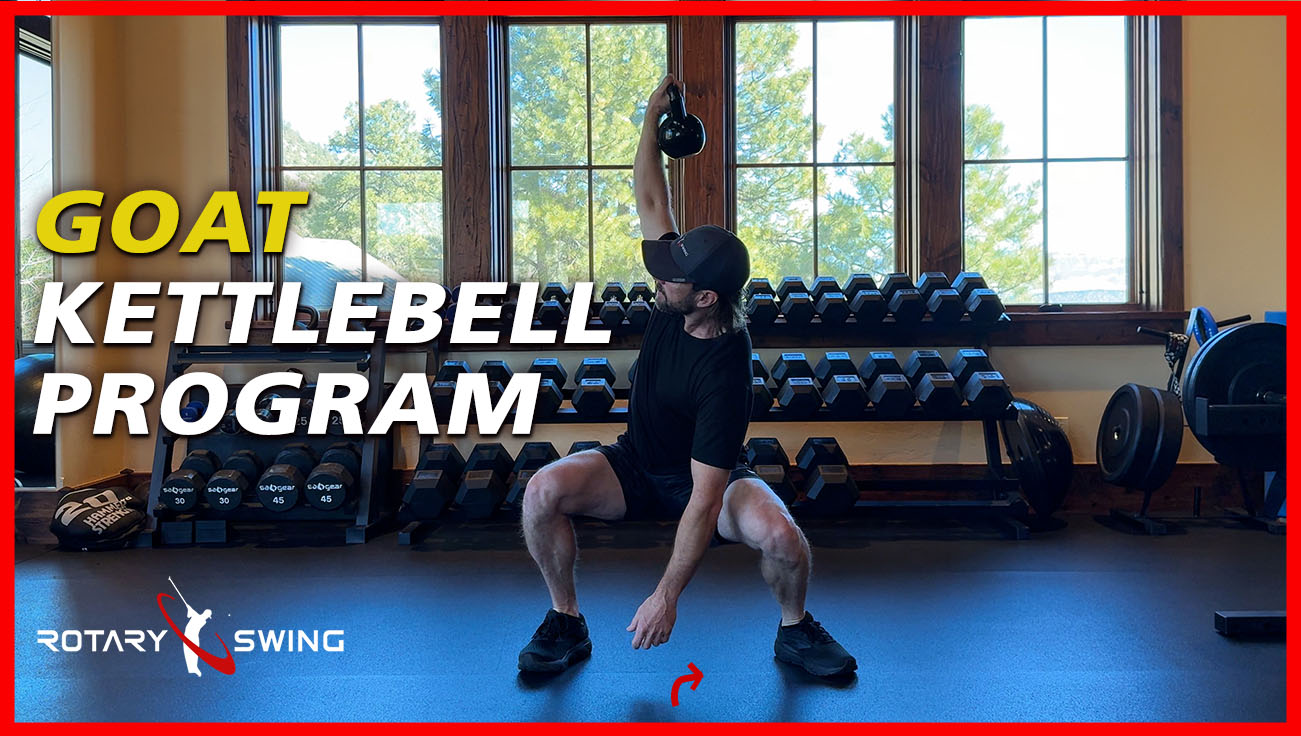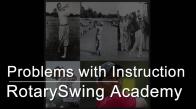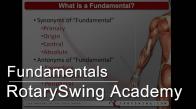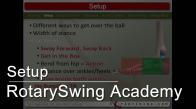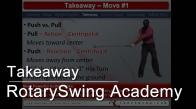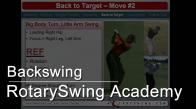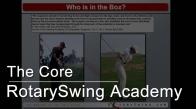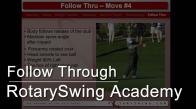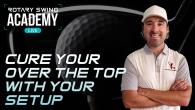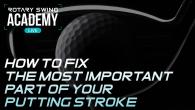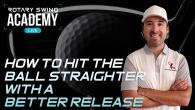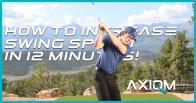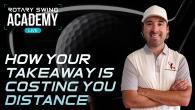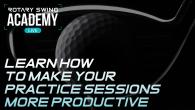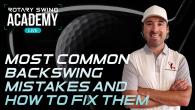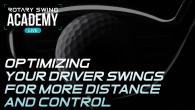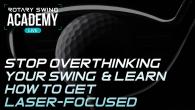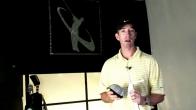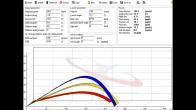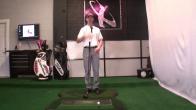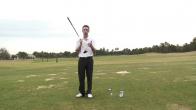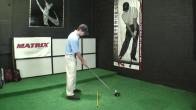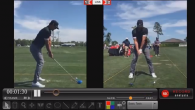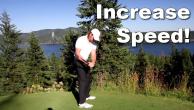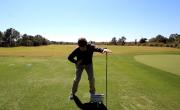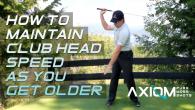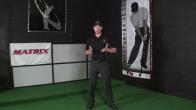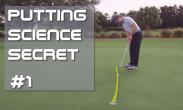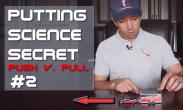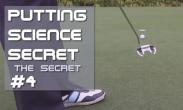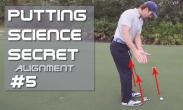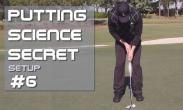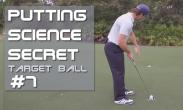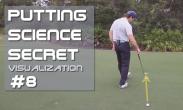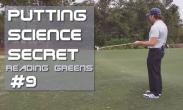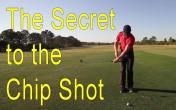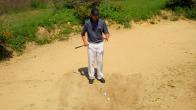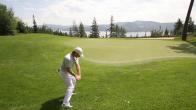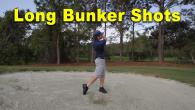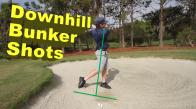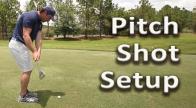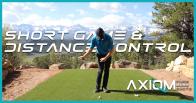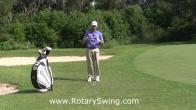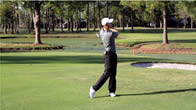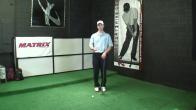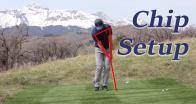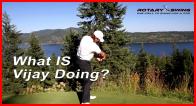AXIOM BootCamp 1, Craig Morrow, Oct 2021, Session 4
Session 4 of 4
Hey, everyone.
Can you see my screen and hear me okay?
Thank you, Mr.
Tyler.
Good morning.
All right, guys.
How's everybody doing this morning?
Ready to get dialed in, get things moving forward?
We're going to.
Quick update for the schedule.
And obviously, Craig is not here again.
Uh, he should be back very soon, but I'm standing in for him for this last session.
Um, today.
What we're going to do first is I'm going to take some questions from everything we've covered so far.
And primarily the compression drill.
Now that you've had a little bit of time to work with it, excuse me, we're going to take the compression drill, we're going to break it down.
And then once I get through those questions, what I'm going to do is walk you through how to take what, everything that you've learned and the compression drill and taking it to full speed.
And the things that you need to watch out for, the things that are the most common mistakes.
There's a lot of really small, simple things that we see over and over again in the swing reviews.
And I'm going to discuss those in this session because those are the same things that most everybody struggles with.
I'm going to talk about how to fix them and what things you need to focus on to prioritize getting your swing on track.
And that's really important because a lot of times what a lot of golfers do is they prioritize the wrong stuff, the stuff that maybe looks pretty, but doesn't actually help them hit the ball better.
We're going to focus on what helps you hit the ball better.
And then as a result, it's going to look pretty.
So that's what we're going to talk about today.
But for now, let me spend a few minutes answering any questions that you guys have on a compression drill.
Or anything that we've covered so far, so go ahead and post those up in the chat.
I'm going to take a look at them as they come in here.
All right, Nick?
The webinars, these should be available, uh, forever.
You should see them in your account if you log in.
Go to the top right corner of the screen, the drop down button.
I think you can see them there, but yeah, they'll be around for a while.
Is the compression drill the same as the nine to three drill?
It's a good question.
So the nine to three drill is basically essentially just taking the club parallel to parallel.
The compression drill opens it up so that you can take it much further than that.
But essentially they are much the same.
But what you're really focusing on in the compression drill is the body movement in a fluid motion.
And the nine to three drill we saw a lot of times is people could do this part really well, but they only.
Got the club here to here very well, and then once they tried to take it past that, they didn't have the ability.
Because the motions were just kind of blocky and choppy, and so with the axiom, it kind of blends everything into this one big motion, that's a lot easier to take it to a full swing, so that's really the difference.
Any other questions on anything else?
Let's see.
Okay, clockwise rotation of the hands, so David David is saying that he feels what he does, this clockwise movement.
It really opens the face, it shouldn't open the face at all, so let's just do it.
As an exaggeration, if I rotate my hands, that face is still square as I come down and into the hitting area.
So if you're doing something a little goofy with it now, you could do something really crazy and leave the face open.
But as you're doing that as you, if you watch, if I take it really, lay it open, do this really silly.
That naturally wants to square back up because I've rotated this arm so much, these muscles want to rotate back the other way.
But in general, that the motion is just setting the club on plane.
This is still pretty flat here, but you can see the cup base is still not open So if you're opening the face, You're probably cupping your your left wrist, Hitting the ball thin with the compression rope, There's a million things that can cause you to hit it thin.
But almost, I would say the majority of the time focus here, the majority of the time when you're hitting the ball thin, doing the compression drill is.
You're just doing something with your hands, you're scooping it, you're flipping it, you're slapping at it.
That's what causes most thin shots now.
You could be sliding too far forward, you could be pulling too hard with the lead arm.
That's another really common one for golfers who are trying to be more lead side dominant.
I talked about this in the last session, but I want to reiterate it your left arm is inert, you're not pulling that hard with the left arm.
People way, way over do that.
The pulling motion is really, really subtle and for most, you probably won't even feel it.
But what I see a lot of times is people doing the compression drill with their lead arm, or doing anything with just a lead arm.
And they're pulling their hand way out like this, a little bit out in front is normal, but you don't want your hands way out here.
That's going to cause you to hit the ball thin because the club doesn't get a chance to bottom out.
So typically it's going to be doing something with your hands to flip and scoop at the bottom, pulling too hard with the lead arm, or perhaps sliding too far.
But that's a little bit less common.
Those are the most common causes of hitting it thin.
Hitting it off the toe.
Typically, hitting it off the toe is because you're rotating your body too much.
And so the club doesn't get a chance, and your arms don't get a chance to get out and release back out in front of your body.
So you kind of keep turning and hit it off the toe.
But this could be setup issues.
You can be set up too far away from the ball.
You can be set up with bad posture.
Lots of things that could cause that.
If you're not sure what you're doing there, you're certain you're not rotating your body.
Your shoulders are still squared.
In fact, you can get a swing review because it's one of those things that you're just chasing around and there's lots of little causes that could do it.
Dead drill versus axiom.
So there's a video on the site.
It was called dead drill versus axiom.
But here's the thing.
And this is something that.
that I want to make clear and Chris and Chris Tyler, who's doing the next bootcamp is making adjustments.
Again, these are the beta versions where we put together a format and think, okay, this is how the best way you want to tackle it.
And then as we go through and we see your questions and we see the swim reviews come in, and we watch the mistakes and challenges and questions come in, then we'll make adjustments.
So Chris is adjusting the next bootcamp that starts next month for the sessions that he's going to lead.
To integrate the dead drill a little bit more, so what does that mean exactly?
The dead drill and the axiom are the same thing, they're the same movements.
But the dead drill breaks it down into a much more finite chunks, much more granular, smaller pieces.
So you just kind of bite off a little bit at a time, the axiom makes all of those little chunks happen automatically.
But the one thing that we found predominantly throughout the beta test, with the axiom in the beginning of this winter, was that the people who had worked on the dead drill and got in the proper position of the dead drill, this was the light bulb that made everything flow.
And that's what you have to do in the swing.
The golf swing is not chunk, chunk, chunk, chunk.
But a lot of times it helps to learn it that way.
And of course, that's how I've taught it for many, many years.
The axiom gave me that little connective piece to glue it all together into one motion.
But if you're having trouble making the movements correct, then going back and working through those the dead drill in, like, step by step in small pieces can be super, super helpful.
And that's what Chris is going to do in our next beta version of the boot camp.
Is breaking it down and more into smaller chunks, and then putting the axiom on top of it to glue it all together.
Let's see David, the left arm is always going to feel inert, whether you're trail side or lead side dominant.
Martin, good question.
Clamshell drill.
Clamshell drill is super important.
Again, It's one of those things that breaks a piece of the swing out, or several pieces of the swing out into smaller chunks that are a little bit more digestible.
Rather than kind of gluing it all together.
But Martin's saying, Hey, I can do the clamshell drill really well.
I don't have a club in my hands, but when I have a club or a ball, it all falls apart.
Super common.
But that's telling you what you're doing to power your swing, which is what we're going to talk about later today in this session is how to get your lower body working, because if your lower body doesn't work correctly.
It doesn't matter how pretty your arms are at the top or how good your swing plane is, you're always, always going to use your arms and shoulders too much in the swing.
So I'm going to hold that question because I'm going to come back to these common faults that we're going to talk about in a bit.
When should I see any increase in my distance?
That depends on a bunch of different things.
LeSter It's a good question, But you can see increases in distance right away, and you should.
But again, it depends on what's going on with your swing.
We have thousands and thousands of golfers with tens of thousands of different swing faults.
So if you're losing lag or whatever, there's just so many different things, it's an impossible question to answer.
Cause of trailing elbow being too low during backswing.
You need elevation with your arms.
Will we be able to access the next revised?
Boot camp, Uh, not the replay.
That's only for people who've enrolled again.
We're going to keep testing until we kind of get the formula perfect.
So there will not.
Uh, we don't know Chris and I don't know if that's going to be the best format either.
So we will keep testing until we get these things dialed in.
How do we take the axiom to the golf course?
Well, Paul, that should be hopefully pretty self-explanatory in that the axiom movement is the golf swing.
It's It's not something you take to the course or not take to the course.
It's always there with you.
So if you're wanting, I think what you're really asking is how do I kind of implement this in the real world versus drills?
But that's, again, kind of the point of the axiom because it is one holistic motion.
It's what you should feel on each and every shot.
So you should always be able to take it to the course with you.
It's not one of those things where you need to practice at home forever and then, you know, eventually try and bring it out to the course.
You should be able to take it out there with you anytime, all the time.
Gerald, the positions as far as trail side versus lead side are going to be the same.
The dropping of the arms, I'm going to talk about that in a moment when I get into the common faults and fixes that we see all the time.
I think this is true or false.
After the transition, your hands keep the same relationship to your hips until after impact.
Don't know what relationship you're referring to because the hands are always moving.
If that's true, when you throw a ball, it's mostly a vertical motion.
Uh, TLDR couldn't read all that.
You can't fit it in there without having me having to click the read more too long.
Uh, how important is ball plotting on the compression drill?
Uh, that's a great question, Kevin.
We want to always be checking that once you have the basic motion down, it's like, once you can kind of come on camera, focus, once you can kind of put it all together.
Hit the ball, you should be able to start looking at ball flight, but if your positions are wrong.
When you're doing these little checkpoints, which again, I'm going to come back through here in just a moment.
That we're going to spend a lot of time on today to get all these checkpoints.
In.
That, if you're hitting those right, then the ball position, the ball flight, should be the next thing you're looking at.
You should be able to control and manipulate ball flight here, even on short shots.
Yeah, James, it's just all about getting reps in there.
Anybody else lost audio?
Greg's saying he lost audio.
Too many questions.
Hold on.
Let me catch these up.
When you are at impact, should the trail hand be facing down?
Not unless you want to hit it really low.
When I do the axi movement, it is up to this guy doing something very wrong, Greg.
You need to get a swing review there.
That shouldn't happen at all.
With lead arm release, I feel like I'm just focused on lower body.
That's a good thing.
That's exactly what we're going to be talking about today.
Any advice on how to keep the legs active while addressing the shot?
Yep, I'm going to talk about that in just a moment.
How do you know you are doing lag video correctly?
What is the feel?
Uh, I've covered that stuff in those videos.
So that's something where you should, you know, get a swing review if you're not sure if you don't know exactly how much lag you should have.
That's a really simple one that the instructors can get you going with really quickly.
Or post something in the community there to get a quick answer.
Because we got to see it.
Uh, can you confirm, understand?
Some feel that should happen next?
Too long?
Sorry, David, I can't read all of that.
All right, I think I'm going to answer these questions here as we go in.
So let me dive in.
If there's any questions I don't answer in this next section, ask them to me at the end and I'll come back to them.
But hopefully I'm going to answer the stuff that's coming up there now and the stuff that's going to be.
or the stuff that was asked earlier.
So here's the big picture.
So first of all, today's session is all about taking this stuff to the real world, to go to full swing.
And that's the goal.
And we want to be able to do this as quickly as possible with proper fundamentals.
Now, here's the number one thing that I see most often in people in the swing reviews and the URGs.
And that is when they're learning the axiom or the dead drill stuff and putting it all together, that the lower body stalls out.
I would say 95% of the students that I looked at this week all had lower body movement that was incorrect.
And that's the number one thing that separates you from being a great ball striker.
It's the number one thing.
Your arms and hands can kind of do all sorts of stuff.
And I saw all of you are asking questions about, well, this loop motion, how do I get this into its real world?
Well, as you see with Matthew, well, you could do that.
Certainly don't need to.
If you look at my swing.
I don't have much of a loop in my swing at all.
It's very, very subtle.
That's just to get the feel of a clockwise movement versus counterclockwise, because so many people swing counterclockwise and have no clue that they're doing it.
Does that mean you need to make this big clockwise loop?
Absolutely not.
That's not the point of it at all.
But sometimes we've got to make this big exaggeration to help people realize because I can tell you in all the lessons that we do all the time.
People still do this all the time.
And I ask them, I show them on video, are your hands moving clockwise or counterclockwise or clockwise?
And they can't stop it for the life of them by trying to do something subtle, like trying to make this little correction, because their power source is the arms.
And if your power source is the arms, your legs will always stall out.
They won't do anything correctly.
And you will keep swinging.
counterclockwise and keep swinging over the top and keep casting it.
That's why that loop is there to get the big exaggerated field.
Now, of course, we tone that down.
It's much smaller than that.
But if you can't stop swinging counterclockwise with your hands, it helps to swing that pendulum to the other side.
That's the point of it.
That doesn't mean that you keep practicing this huge Matthew Wolfe-esque loop.
It's not the point of it at all.
It's simply to get it in your brain like, oh, that's what it feels like to shallow a club properly.
That's what it feels like to swing clockwise with my hands instead of counterclockwise.
So that's the point of it.
So when you're trying to take it to the course and this exaggerated loop, A, perhaps you don't even need to do that because you're not swinging over the top with your hands in the first place.
Now, if you are, this clockwise loop will instantly change that if you do it correctly.
But again, you just tighten it up.
It's just a small little tweak there.
It's not that much of a movement when you're doing it at full speed in a full swing.
But the bigger thing that we've got to talk about is this lower body stuff.
Because what I saw in all of these swing reviews I did this week is the lower body always being almost squared impact or just barely open.
And the one thing that you can notice, no matter who you like on tour, what your favorite swing is, who your favorite golfer is out there.
Almost every single one of them have their hips wide open at impact.
And almost every single amateur on the planet is dead square at impact or very, very slightly open.
That's a very easy to discern trend that you can see between high handicap golfers and professional golfers.
So what does that mean?
Does it mean professional golfers are more flexible or that stuff?
No, it has nothing to do with that.
It has to do with force.
When your arms begin to take over, your lower body instantly starts trying to stabilize and brace itself because you're throwing it off balance.
When your body has all this force going out this way, if you didn't stop your body movement, you'd fall out onto your toes.
So your instinct is to stop with the lower body movement, stop turning and just brace because if you just turn, it would throw off your proprioception just to be able to hit the ball.
So, what you have to do in order to make that quantum leap to getting power, effortless power in your swing, and make that leap into consistent ball striking, is you have to tone down your arms, and the only way you can do that is by activating your lower body.
You can't take your arms out of the swing if you're relying on them for power and not replace them with anything else.
You have to replace them with lower body movement.
So that's what we want to focus on first is I'm going to give you a few critical checkpoints.
These are the exact same thing that you've seen in the dead drill where I really break it down into small pieces.
The axiom movement, again, just makes those things happen fluidly and dynamically without having to think about it, have a bunch of swing thoughts.
But for right now, we're going to break it down and have some of those really specific things.
So the first thing that you've got to do is getting your hips open and you've got to get off your right foot.
I see so many golfers.
who are like dead flat-footed, 50-50 at impact, and this will not work.
You're never going to see that in any really great ball striker.
It's extremely rare that somebody does that, and they will always have a loss of power if they do.
That's the reason you see guys on the tour who, with their irons, keep that foot nice and low and the foot rolling into the inside.
I'll put my foot on the screens.
It's a little easier to see.
And they look really quiet and calm with their lower body.
And then when they go to hit the driver, you see that heel up in the air because they're really going after it.
They're getting their hips to move fast to get them wide open.
That's how they rely on what they rely on to produce power.
And amateurs don't do that at all.
They can they can swing harder and just be more flat foot and hang back.
And we see Chris sent me a swing this week of somebody working on this stuff.
And that was his swing.
Obviously, his pressure is on his right side.
He's hitting off his back foot.
So until you learn.
To get your pressure off of this right side, golf will always be a struggle.
How do we do that?
Again, this is where we start hitting those little checkpoints.
Again, the dead drill takes the arms out of it so you can really focus on just your lower body.
Once you have this lower body movement, you know where you're supposed to be and you know what it's supposed to feel like, then you can add the club and the arms and the movement back in there to add speed.
But in general, your checkpoint, my right foot, it's got so little pressure on it that I can essentially just pick it up here.
That's where I want to be at impact.
That's how much pressure needs to be on this lead leg.
So as you're coming down, as you're sitting into this left side, and if you're doing the axiom movement, you can use the right foot to help you push.
And I'm going to talk more specifically about this in just a moment.
But that will help you get off this right side.
And you can still keep your heel down and low to the ground.
Now, the key is pushing correctly.
And that's the hardest thing for most golfers to understand because they push and just move laterally.
And this creates this big old reverse C.
So how do you push correctly?
That's where the axiom movement comes in.
That clockwise movement helps move everything in the right direction.
One simple feeling, one simple thought is to get your right knee pointing in the right direction.
And what I mean by that is a lot of times if people don't push hard laterally and slide too far, what they tend to do is push their knee out.
Now, of course, what's that going to do to my tush line?
If my knee is moving forward and I'm just kind of pushing up off my toe, this is going to lead to me losing my posture, right?
So how do we push correctly to get off of that right side and get our hips open?
Well, what I want you to think about is taking your right knee.
and pointing it down the target line and replacing where your left knee is.
I'm going to talk about that down the line in just a moment.
But first, your right knee, as you come down at impact, shouldn't be moving toward the ball.
It's got to rotate so that it's pointing more down the target line.
Now, it's not going to point straight down the target line, even if I'm trying to exaggerate this for you guys to make it obvious on camera.
My knee is probably still pointing 45 degrees out.
It's just a feeling or a thought to get it pointing down the target line.
Now, what does that do to my hips?
They're open.
Now, what happens?
You can see how open my hips are.
Put a club up here.
My hips are 60 degrees open by taking my knee, pointing it down the target line.
Now, watch what happens when I move my knee forward toward the ball.
How open are my hips?
They're not open at all.
Knee pointing down the target line.
is a super, super simple way to get this in your head.
You've got to get your hips open in a simple way to accomplish it.
Now, what I said with your right knee replacing your left knee, what I mean by that, here's where my left knee is at the top of my backswing.
And what I'm going to do is take my right knee and try to move it to that position.
So here's my knee.
I'm just going to try and point it and move it exactly where that left knee was.
You see that?
So it's pretty close.
It's not going to get exactly there.
But that's moving my left knee out of the way, which also moves my hips open.
So when you look at it from face on, so again, top of my backswing, here's where my left knee is.
Now I'm going to take my right knee and put it where my left knee You see it doesn't get exactly there, but it's close enough.
To get the feeling, the idea that as soon as I do this, if I replace my left knee with my right knee and point my right knee down the target line.
Boom.
Your hips are open, and as soon as you have that, you're off to the races.
Because without that, your arms will always take over the swing.
You will not have any choice because your hips can't do anything to help you.
So that's the most important thing that I want.
You to be able to take out to the range and practice and get into your swing.
Because once you have a slower body movement down and it's not complicated, but once, but you do make, you may need to break it into smaller pieces to get the feeling of it.
Once you have that, then you're off to the races.
Because then the things that you're asking about, like, Well, how much should my hands drop?
or what should it feel like for my hands to shallow out?
It happens truly automatically.
And again, you add that tiny little clockwise movement with your hand.
Very subtle little clockwise movement with your hands.
And watch what happens when I just move my lower body.
So I go to the top of my swing, and now I'm just going to focus on what?
I'm going to take my right knee, and I'm going to position it where my left knee is, and I'm going to point it down the target line.
I'm not going to do anything with my hands.
And as I do this, what happens to my hands?
I don't have to think about my hands shallowing out.
If you have to think about your hand shallowing out, it can be common if you're used to coming over the top so your brain's kind of tied up with that and you can't think too many things at once.
But if you are trying to really feel like, okay, I've got to really shallow out my hands, I can assure you it's because your lower body isn't working correctly.
Because if your lower body's working correctly and doing enough work, your hands won't have any choice but to shallow out.
That's the secret of the swing.
And it's no different than any other hitting or throwing sport when you think about it.
If you're a baseball player and you're standing up here, getting ready to hit a ball, you don't have to think about shallowing out that bat because obviously the bat can't hit the ball.
On this plane, it's moving, can only move straight up and down, so I know that this bat's got to get into this plane.
How do I do that?
Not with my arms?
Look, how stupid that would look.
That doesn't work.
That's how a lot of us try to hit a golf ball.
Like, Oh, well, I know the club's got to shallow out and get down on planes.
I'm going to use my arms to do it, I'm not using my arms, I'm using my legs.
And as soon as I do that, what happens to the pitch?
An attitude of my back.
So somebody was asking about, Well, how low does the right shoulder go when you're trying to get this shout out?
Is it different lead arm versus trail arm?
No, has nothing to do with it.
I'm not trying to tilt my right shoulder as I step forward.
And just like, you know, The Golf swing, when I'm talking about where this right knee goes, the baseball is not really any different.
I'm pointing that right knee at the pitcher that's moving my hips out of the way, and the back shallows up.
So everything that most people have asked questions about in the swing reviews and put in their notes, they're trying to manipulate something, trying to fabricate something that happens truly as a result of moving your lower body correctly.
That's why this axiom movement.
and combining it with, you know, if you need to break it down in small pieces with the dead drill is so important and so powerful because it puts everything together.
Your arms and hands won't really matter if you move correctly with your lower body.
I can, again, take it straight up, Matthew Wolf it, as long as my lower body's correct, that's all that matters.
So when you go out and practice and you're doing these little compression drill shots, you still want your hips all the way open.
You still want that knee moving forward.
You still want your focus being on your lower body.
And then the hand movement will take care of itself for the most part, unless you're doing something crazy.
But in general, it's just because we're overusing our arms and hands that we struggle with where our arms and hands should go.
So I hope that really helps because this is the most important thing to get right in a swing.
So let me open it up to some questions now on how to get your lower body correct.
And how to add speed to this?
Because you can see going from here, or the compression drill, where you're making really small swings is really simple.
The only thing is that you have to be more assertive, more aggressive with your lower body when you want to go to full speed.
And most people do the opposite.
Now, I'll pose this to many of you out there who are probably kind of like mid to lower handicap players.
If you're the type of person who can hit your irons relatively far, you know normal distances.
You can hit your seven iron 160 plus yards, but your driver only goes 220 or 240.
This is something we see all the time where they can hit, you know, as a reasonable golfer, they can hit their irons pretty far, but then there's this massive gap that doesn't exist in their driver distance.
That happens because you're not using your lower body correctly.
You can cheat and manipulate it with your hands and arms with the irons and get away with it.
But when you go to the driver, if you see like, gosh, I hit my irons as far as a lot of tour pros, but my driver God 50 yards short.
It's because you're not using your lower body correctly.
So, all right, I'm going to take some questions I see popping up here and see what I can answer.
Oh, shoot, I accidentally deleted that somehow, Merrick, where should the pressure be on the left foot?
Well, if you go and look at the force plate study stuff that I did like on Justin Rose, for example, I talked about his axiom movement where you can see on the force plates.
It's going to be primarily back over the ankle, a little bit to the outside of the foot, but it's going to be spread across the foot with most of the pressure tending to be on the ankle.
Let's see.
Oh, yeah.
Advice on keeping legs active and addressed.
The worst thing that you can do when you go to hit a golf ball is to stand over it and stop moving.
And that happens a lot of times.
We're not aware of it.
Right.
But I see it all the time.
I'm playing with amateur golfers and they're intimidated or they're just nervous.
So they're trying to make trying to go through their pre-flight checklist.
As soon as you do that, all bets are off.
When you get over that ball, you need to be ready to go.
You don't need to get over the ball and then spend the next 45 seconds thinking through everything.
If you do, you probably shouldn't be on the golf course right now anyway, because your brain is not going to allow you to play to your best at all.
You need to work that stuff out on the range.
But when you step up to a golf ball on the course, you need to be ready to rock and roll.
So for me, I do all my thinking, which hopefully isn't very much, back here behind the ball.
So when I step up to the ball, my whole free shot routine is pretty fast.
I get my alignment.
You'll see my feet are moving a little bit.
I take a couple looks.
And then I go.
And then I break stuff back behind me.
But that is the goal.
Because any more thinking than that is going to cause you to freeze up.
And by spending very little time over the ball, my feet are just kind of always shuffling and settling in.
I'm not really sitting here.
This is what most golfers do.
You know, and their feet get frozen and then you're done.
Take less time over the ball.
You'll hit better shots.
Are you pointing right knee or pushing right knee or both?
I don't understand that question.
Okay, Joel, so you have.
you asked about, your shoulders tend to get open when you point that right knee to the target.
Now, I want you guys to think about this for a second because my goal is to teach you how to teach yourself how to play better golf.
Not teach yourself.
I want to give you the tools, but you need to be able to maintain your game so that you understand what you're doing because that is half the battle.
If you understand what's causing you to make a mistake, then you can correct it yourself in the middle of a round.
What he's asking is, when I try to get my right knee open, my shoulders get really open.
Why is that?
What's going on?
Well, can I do it without that happening?
Of course, right?
So what's happening is that I'm moving my upper body in sync with my hips, with my pelvis.
I can move them independent, but a lot of times people don't develop this feeling, and so everything kind of goes together.
So all you need to do is kind of stand here and move your hips independence.
My shoulders aren't moving, but you need to get this feeling of moving them separate because they can move separate.
But a lot of times we haven't done something like this, which a lot of times even just doing this is very challenging for people.
So if you stand up right now and try to do this, you may feel that stuff's still going to move, but you should be able to move them completely independent.
And that's what they need to do.
However, even if you can do this drill correctly, just stand here and twist your hips without moving your shoulders, if you're still powering the swing with your upper body and you don't realize it, your shoulders will still end up open.
Driver ball flight is good, mid-irons.
First, it could be your shafts.
I don't know what kind of clubs you're playing, and you could be flipping it still.
I'd have to see your swing to know what's going on there, John.
In your video, the ball position is always the same.
That doesn't seem correct.
The ball position is always the same, Peter.
I talk about that in the ball position video.
Just from one foot to another.
I'm assuming you're talking about setup there, Charles.
Just going back and forth, just keeping your feet moving is the key.
It doesn't matter how you do it.
You just got to keep moving.
Short game and bunker shots.
I talk about that stuff in the short game video.
That's a bit.
Uh, short game and full swing have very little to do with each other, so I wouldn't, uh, I wouldn't put that too much in there.
There's some pushing from the ball, uh, so when pointing the knee down, the line is, there's some pushing from the right ball of the foot.
Yeah, so remember, during that transition with the axiom, you're going around that foot.
And then that pressure is back on the heel and then it quickly moves up onto the toe and ball of the foot.
Can you push off of that a little bit?
Absolutely, but remember, you're also during this phase, you're shifting most of your pressure onto that lead foot immediately during the transition.
So as I'm at the top of my swing, I'm already, my right foot's already light.
So how much can I push off of this foot when most of my pressure is on the left side?
Already?
Not that much.
But if you hang back and keep a lot of pressure here in the transition, then you can push off of it incorrectly.
So again, If you transition correctly, this right foot, if you're right-handed, is not going to push that hard because there's not that much pressure on it.
Any other questions in here so far?
How do you implement the axion when the ball is above the feet or below the feet?
So I believe Chris Tyler has done some videos on different shots that you face.
In the course of a normal round of golf where it's above your feet, side hill lies, et cetera, the movement never changes.
The axiom movement doesn't matter what you're doing.
If the ball's way above your feet, it's not going to change that much.
However, on a personal anecdote, for me, when I have a shot where the ball's way below my feet or way above my feet, something really awkward on a side hill lie, not talking about uphill versus downhill, but side hill lies.
I tend to quiet my body down and swing a bit more with my arms because I want to make sure that I get clean contact.
Say if the ball's a foot or a foot and a half above the ground or whatever like this, this is a really challenging shot when you're on a really big side hill a lot.
I tend to use a little bit more arms and quiet my body down, my lower body, similar to how I would hit a fairway bunker shot.
That doesn't mean that I don't use my lower body.
Of course I do.
But I do quiet it down to make sure I get good contact.
And I pretty much allow for that with taking an extra club, depending on what I'm dealing with.
And I do that for a couple different reasons.
But when you're doing that and you're hitting on a really big side hill lie and you take extra club, that lower loft on the face is going to make the ball curve a bit more.
So for instance, the ball's above my feet.
And let's say it would normally be a 7-iron shot and I might take a 6.
Because I'm not going to put a lot of power into it because I'm going to be a little bit more armsy with it.
That 6 is going to curve a little bit more because it's got less loft.
So you have to kind of take into account those things.
But in general, the movement doesn't stay anything.
You just tone it down a little just to make sure you get good contact.
In the post-up, where is the pressure on the left foot?
I just answered that question.
If we're looking to shape shots, is the method still to adjust the angle of the lead hand during that?
Shaping shots is the same no matter what.
Your lead hand is always controlling that club base.
The right hand is helping add power or helping transmit power from the body depending on how you want to swing.
But your control of that club base is always through that very subtle little pulling motion.
If I want to de-loft it, I'm just going to bow that wrist in a tiny little pull to help deal off the face.
And if I want to control the draw or the cut, you're just always doing that with that subtle little left-hand move.
Shoulders are always going to be the same.
They're always going to be basically square.
It's okay if they're a little bit open or a little bit closed or what have you, but in general, it's okay for it to be a little bit open.
With the push drill to put a little bit more right side into it.
You can see certain golfers do that.
But in general, Tiger Woods, you don't use a lot of right hand, his shoulders to actually be very closed and impact.
So You can do either way, But we want to stay in a pretty tight range there.
You know, you want to keep them basically square, or just maybe five or ten degrees open, five degrees closed.
You can still play great golf like that, Okay, Jeff is asking, on accident release, I either hook the ball really bad or arms feel like I want to separate.
Can you demonstrate with compression drill?
I'm not exactly sure what we're going to demonstrate, but if you're hooking, if I had a guy, I'm doing some Craig's URG.
So if you guys are in Craig's URG, you've seen me do some lessons this week to help him while he's out.
And I had another golfer who asked something similar.
I thought it might have been you, Jeff.
I'm not sure.
I think you were new or not.
But this golfer was.
saying, you know what, I'm working on the action movement and I'm hooking it and I don't know why.
And so I looked at his lesson and I said, well, for starters, you're aimed about 40 yards right, so there's a problem.
And he had no idea.
And then he also had the ball not only back in his stance, but because he was set up so close, his feet look like this.
What does that look like to you when you look at my feet?
As a right-handed golfer, what does it look like?
Can you tell anything?
You can see the whites in my shoe.
You can see that my right foot is effectively swayed open in relation to the target when my left foot is closed.
That's going to make me come from the inside even more.
And then to boot, the other club is club -based and stronger.
So, if you're hooking it, it's not the axiom's fault.
Every tour pro releases the club exactly the same way that I've showed you.
It's not any different, and they're not struggling with the ball.
If you're hooking the ball, you need to get a swinger.
You're obviously doing something that's incorrect.
You're either flipping your hand or you've got all these beautiful little setup things.
You're taking it inside.
You've got a good place.
So many things that can cause you to hook it.
Do you guys lose sound there for a second?
Can you hear me?
Give me a sec.
Let me see if I can change mics.
Can you guys hear me now?
All right.
You guys can hear me okay?
Okay.
I'm going to put on this wireless mic.
This happened last time for some reason.
I'm not sure why.
Okay.
I'm not sure if you guys could hear my.
answer to the hooking there.
So let me come back into that.
If you guys heard this already, let me stop or stop me.
Okay.
So some of you may be experiencing this.
So you're going out there and you're working on releasing the club.
And for many of you, releasing the club and letting the club rotate over will be a foreign feeling because you've never done it.
Most amateurs don't release the club.
So when they start trying to release it, they just start flipping it.
And that's not the release.
But If you're hooking it, there's lots of different things that could be going on.
So what I was talking about just a moment ago is I'm doing some of Craig's URG students, and I had a student in there who said, you know what, I'm trying to release the club now, and I'm hooking it, and I don't know why.
Well, the first thing that I saw in his swing is that he was set up about 40 yards to the right, and then he was complaining that the ball was starting over here.
That's a shocker, right?
So obviously if you're set up closed, your path is going to be coming from the inside without you realizing it because you're set up shut.
The second thing that he did was that he had the ball back in his stance and it was set up like this.
So now you can see that my right foot, you can see the white of the inside of my shoe and you can't see the white of the inside of my left shoe.
What does that mean?
Well, I've splayed my right foot out.
Right.
So now not only am I closed in relationship to the target line, but I've splayed this foot out, which is going to allow me to rotate even deeper because as this foot is turned out, I'm going to exaggerate it.
It's way easier to take clubway inside, which he did.
And so then he's coming away from the inside.
And then he also had a shut face at the top.
So of course you're going to hook it.
So the reality is if you're hooking it, trying to release the club properly, you're doing who knows what wrong.
It could be a bunch of things, which is why the swing reviews are there.
So get a swing review because the release is not the problem.
Every tour pro on the planet releases the club.
And I've proven this over and over again, even with golfers like Zach Johnson, they all let the face and their forearms rotate over.
Some do it more.
Like Luke Donald, some do it less, but everybody lets the club face rotate over.
If you're hooking it, it's you doing something incorrect and you need to get that fixed.
And if you don't know what it is, get a swing review.
Let's see.
Steven, there's a video on the side about splaying your feet.
So it should be covered in there.
Let's see if I missed any other questions on here.
So David, I'll read this question.
You guys can see the question.
But basically his question is, should I be coming off the merry-go -round ahead of my hands and arms starting to drop?
So what do you guys think the answer is to that?
Should he be getting off the merry-go -round as his hands and arms start to drop?
So who's got the best answer for that?
Joel says yes.
What else?
Same time.
Anything else?
So should he be coming off the merry-go -round at the time that the hands and arms are starting to drop?
So we got all yeses so far.
Slightly behind, at release.
Okay, interesting.
Here's how I would answer that question.
You don't have enough time to think about that.
If you're thinking about something that's happening in thousandths of a second, then nothing else is going to happen in the right sequence.
So I understand what you're trying to ask, But the reality is, the best answer is you should have no freaking clue whether or not your hands are dropping at that time.
Because that movement of your lower body will take care of everything with your hands, as long as you're not trying to hit the ball hard from the top with your hands.
So if I go to the top of my swing right now, basically the top of my swing and my pressure on my back foot at six o'clock is when I'm starting to get.
moving forward and get off that merry-go-round.
But technically, my hands are dropping as I'm moving forward.
Now, right now, I'm not trying to move my hands at all.
I'm just focusing on that merry-go-round movement.
What's happening to my hands?
They're dropping.
I'm not trying to drop them.
I shouldn't have to do that.
I'm just letting them move or get moved by that foot movement.
And so they're going where they're supposed to.
And from here, then I'm going to pour on the power.
But the reality is you don't have time to think through all of those things.
However, if you're used to firing your arms hard from the top, like most of us are, that's how most golfers learn how to play, and then you have to spend all of this time learning how to beat that out of yourself because you never learned how to use your lower body correctly, and so you keep chasing the club.
One of the things I tell my students all the time, especially if you're used to looking at your swing on video, is that I wanna see a ratio.
of that transition to see how much your hands move versus your lower body.
So if you're looking at your swing on video, here's what that should look like.
If I go here, so I'm gonna turn, well, you can see my right knee, okay.
Now my right knee has to be moving during this phase of the swing, but what we see all the time is this.
So you can see my hands have moved two feet and my knee has moved an inch.
during this first phase of the swing i want to see my knee move and my hands get moved And that doesn't happen in most amateurs' swings.
Their hands move several feet, and the same time their knee moves barely an inch.
And you wanna reverse that.
Now, of course, your knee doesn't move several feet, so you have to use some common sense here.
But you wanna see that during that transition phase that the lower body's moving more to a degree, and technically it won't.
The hands have still got a greater distance of travel, but you can see it very obvious.
When you see somebody's hands do this and their lower body's still closed, you can see my hips are still closed.
By the time I'm halfway down, you know that that person fired their arms down.
You take a tour pro and you'll see their hips are open.
By the time that lead arm is parallel to the ground, most tour pros will have their hips already back to square and most amateurs will be short of square with their hips.
And that just means you fired those hands at the wrong time.
Again, the key is using your lower body correctly.
Any more questions?
Any good exercises to promote hip rotation?
You know, there's a video on the site, we used to have it on the site, where you just basically laid on your back and you just tried to move your hips like this.
Honestly, you don't really need to be able to do this to hit a golf ball.
It doesn't hurt to be able to sit here and move your hips independently of your shoulders, but you can just stand here and do this.
What you really need.
is the sequencing of the swing.
Because when this doesn't move independently, it's almost always because your arms and hands are just taking over everything.
So all the exercises in the world and all the yoga in the world isn't gonna make a difference if you keep moving from the wrong spot.
So what you need to do is train your brain in the context of actually doing what you're going to be doing, which is hitting a golf ball, right?
That's where everything tends to fall apart for us.
So that's why the compression drill starts as small as you wanna make it.
but you keep focusing on your lower body to get this movement down.
And once you have that, it's a lot easier.
You don't have to worry about doing all these exercises and things like that.
It's purely a sequencing thing.
And so you've got to start at the speed that you can do it perfect.
And if at first you can't hit the ball, you know.
10 feet and, you know, move your lower body correctly as you've, you know, hitting these checkpoints and getting that knee pointing toward the target, the hips open, maintain your posture.
Then you have to go even slower or take the club or the ball away until you can.
And then you slowly start stacking those things back in.
Kevin, I'm going to try to.
Is the ratio between your shoulder and hip turn on the backswing the same at impact?
That's a good question.
Probably not something you need to worry about, but that's a little bit different for everybody because of how much shoulder mobility some people have, and they call that shoulder turn.
Your rib cage is only going to turn so far in relationship to your pelvis, but then your shoulders can make it look a lot further.
You can see my ribs didn't turn anymore, but I look like I've turned further.
And then the question is, does it.
come down and be the same at impact?
Well, the shoulders tend to retract a little bit.
So in other words, yes and no.
I mean, it depends on how you're measuring that stuff.
But again, not something I would worry about.
Your hips are going to be 30 to 45 degrees open, shoulders be squared impact, and obviously about the opposite of that at the top of the swing.
But there's a lot of dynamic stretching going on.
Counter-rotating the trail foot.
Is that now obsolete?
No, Gerald, the axiom is that counter-rotation.
As I'm moving this way, where's all my momentum going?
It's going clockwise.
That's counter-rotation because that counter-rotation continues into the downswing.
As I get up onto the ball of my foot, that's why you see guys like Tiger, their foot actually moves in, their heel moves in toward the ball a little bit.
because that windup is continuing to happen and it's happening very quickly.
So if I do this fast and I get up onto the ball of my foot very quickly, you can see that my foot is pivoting in.
Yeah, yeah, that's the problem with the TPI and exercises.
It can give you all the exercises in the world and it doesn't do a darn thing.
Is a pause drill to top your backswing good to learn to turn the arms off?
It can be.
It can also do the opposite.
So Daryl's question is you go to the top of your swing and you pause, and then you kind of get the lower body going.
Well, the reality is by the time that you get your arms to that spot at the top and you pause, your lower body should have already been starting to move back the other way.
That's the difficulty with it.
What I see a lot of golfers do, go to the top, pause, get static, and they're in this good position.
But then, of course, because the lower body should have already been turning and shifting and stretching these muscles that pull the arms back down, they don't have that, so they just fire their arms.
So it can be, but I generally, it's something you've got to be very mindful of.
It's hard to get your lower body to go correctly when you're static at the top.
Does it make sense?
The feeling of the start of the swing starts with the internal rotation of the left hip.
That's something that's never crossed my mind.
So I would not think of it that way.
My left hip isn't really doing much of anything.
So yeah, technically the left leg is externally rotating during the start of the swing.
Golfer's elbow in the trail arm swinging way too hard with that right arm is very, very common.
John, I've talked a lot about ball flight stuff.
It's just all done with that left hand.
So if you look at some of those lead hand videos and altering trajectory and left hand training videos, those will really help you understand how to manipulate ball flight.
I did answer the compression drill and the nine to three drill at the beginning of the video.
So maybe watch the replay after this.
I spent a little bit of time on that.
Amy's asking.
The left foot has turned more toward the target at the end of the swing.
Yeah, that's pretty common.
Again, it depends on how much pressure you move back to your heel.
Some golfers kind of post into the whole side of the left foot and they kind of create a really firm wedge there.
And some kind of move their hip a little bit deeper.
And as I move deeper, that moves pressure onto the heel.
And because there's a lot of speed, my foot just might pivot, right?
So just, you know, this is, you can kind of hit into more of a firm left side.
And this is getting into subtle nuance.
It's probably not worth discussing.
But when you have somebody who's rotating a lot and you see their foot kind of spinning out, that tends to lead itself to hitting a fade a little bit easier because you're spinning to delay the release of the face.
And when you see somebody who kind of slams on the brakes and kind of does this kind of motion as an example.
That actually helps you release from the inside and makes it easier to rotate and release the club face to hit more of a draw.
So that's one of those things that you'll see.
People who are kind of spinning out tend to hit more of a cut.
People who slam on the brakes tend to hit more of a draw.
Yeah, Jamie, for sure with kids, because they pick up things so fast and typically don't need to break it into small chunks, the Axiom is super, super easy for them to pick up.
Joel, love the left side release.
It is challenging to overcome that.
And again, the more that you use your lower body, Joel, the easier it becomes to let that left side go inert.
Peter.
So, okay.
So Peter's saying, hey, you've talked a lot about in the past about hip spinning, and now you're saying we need to get our hips open.
Those are two totally different things.
So hip spinning is driving so hard off of this right hip, and you don't shift your weight and you just start spinning your hips open.
Or you start driving hard like this and your hip, your foot's coming way up in the air.
We have golfers like this.
There's instructors who teach you to be in an impact like this.
That's spinning out your hips and does no good.
So we're not talking about getting your hips open and being way up on your toe and having your hips 90 degrees at impact, like some instructors want you to do.
That's horrible for your back.
We're talking about just getting your hips open the same amount as any tour pro, which is about 45 degrees.
Good, Amy.
I'm glad that helped.
Any other questions before we wrap up here?
No more questions.
All right.
So lower body, that is the key to everything.
If you get that working correctly, the arms and hands and shoulders and keeping your back to the target and all those things, so much simpler.
But if your lower body doesn't work, you'll just keep making the exact same mistake over and over again.
And you won't understand for the life of you why you can't stop casting the club, flipping it, scooping it, come over the top, et cetera.
Get your lower body working correctly.
Use the compression drill to get this motion so that you're open at impact and then your arms and hands will play so much more nicely.
If you don't fix that, the arms and hands are always going to be a devil for you.
So, use the compression drill and the dead drill checkpoints if you need to, break it down into smaller chunks.
To get yourself into these right positions and be able to hit the ball properly.
Let's see if there are any more questions coming in.
Thank you, Harry.
I appreciate the comment.
Let's see.
Catherine, longer iron is significantly worse than seven iron.
So Catherine's question, this is something I'll answer because I think it applies to most everybody.
This is what I was talking about earlier.
With her shorter club, she feels like it's pretty good.
And then the longer clubs is significantly worse.
The longer the club, the more we instinctively want to swing harder, right?
It doesn't matter who you are.
We wanna swing harder and the club is pulling on us harder.
It's making muscles work harder because there's more centrifugal force on the club, pulling on our bodies, et cetera.
And we just wanna hit it harder.
The whole feel, the goal, again, is that you feel the same with your eight iron as you do with your driver.
Now, of course, they're gonna feel a little bit different, but the amount of effort that you exert really shouldn't change.
A lot of it's just a lack of trust for us or like, that we feel like I've got to swing harder.
That's just something that takes a little bit of work to get over.
Of course, you're going to swing a little bit faster with your whole body movement.
But in general, when you're going to longer clubs, try to pretend that it's a wedge and going back and forth on the range from like hitting a bunch of wedges or nine irons, eight irons, whatever, and then grab your three wood and make a couple of swings and try to feel the exact same speed.
Once you have that, as long as your fundamentals are good, then you'll find that you'll hit it the normal distance.
You'll hit it more solid.
You'll hit it more clean.
But the trick is when we get that longer club in our hands, we start to tense up and everything in our swing flaws.
If it's a little bit of casting the club with an eight iron, it tends to be a lot of bit with the longer clubs.
And so you've got to keep working on those fundamentals.
Let's see.
Anything else that I can help with?
You could grip down on the driver a little bit, sure.
Paul, you're welcome.
Let's see.
Is it okay to think of desalberating the upper body as a stop and square?
No, it's not.
So this is another kind of David's question.
Is it okay?
He's struggling with his upper body.
kind of wanting to take over and saying, is it okay to think about decelerating the upper body?
Well, no, because that's the opposite of what really, if you're having to think about decelerating it, it means it was already accelerating and you were accelerating it.
I don't ever have to think about decelerating my upper body because I never tried to accelerate.
I never tried to rotate it.
I tried to use my lower body.
And then my upper body just gets moved along.
So if you're having to think, stop with the upper body, you're just going to create tension up there.
You're going to put sheer force on your spine.
And it just means that you're not moving your lower body well.
Thank you, Robert.
Appreciate the feedback.
We're going to keep tweaking these things until we get it perfect.
Thank you, guys.
Let's see.
Any other, I'm trying to understand your question, Charles.
Struggling to feel lower body already moving by hand.
Okay, so this is how you really take this stuff to the core.
So he's saying he's struggling to feel his lower body starting to move by the time his hands are reaching to the top.
A good way to start practicing this is with a step.
If you have no clue as to what you're feeling and you feel like, God, no matter what I do, my hands and arms and shoulders just start spinning before my lower body ever starts to work, then take a step.
And what I mean by that, and you can do this with just one hand, it's very natural to take a step and get your lower body moving.
A lot of times with golf, because we don't have that step, it's like snowboarding versus skiing.
If you've ever tried to learn, if you learned how to ski when you were younger, And then you pick up a snowboard.
A lot of times people struggle mightily with snowboarding because their feet are strapped together.
They can't move.
And so it feels like all of a sudden, oh gosh, I guess I just don't use my lower body.
That's not true at all.
My calves are exhausted after a day of snowboarding.
So at least my right calf.
So your lower body, when it's stuck together in the ground and your lower body gets kind of rigid, that is a death move.
And that's when they make you use your upper body too much.
You won't be able to get out of that until you learn how to get this dynamic motion.
And that's why I love.
taking a step to get ready to hit a ball.
Now it's natural for me, you'll see my hands moving back, my lower body's already cruising, right?
This little feeling is the same in the golf swing.
And that's why, you know, we can use this little drill to lift the left heel up to kind of simulate this step.
So you just take the step and you make it smaller.
I think there's a video on the site from many years ago that I did like.
and Chris will be able to pull it up, I'm sure, but where I was talking about this stride and step drill, and then you just slowly make this step smaller, and then you just lift your heel, and then you just kind of unweight it, and so you get this lower body activated, but the simplest way is take a big old step, and you'll feel like, okay, my hand is still going back while my lower body's moving forward.
Any other questions before we wrap up here?
Call it how the lower body works.
See, I told you.
Thank you, Chris.
All right, guys, I think we've covered all our bases here.
Like I said, these bootcamp videos in this beta version will be available.
You should be able to access them on the site.
And like I said, for this next bootcamp, Chris is going to adjust the format a little bit.
For those of you, I know a lot of people enroll in both of them because just to see how we do things different or to hear it over and over again.
And then when we release the next one, if you do want to participate in another one after we change the format a little bit until we kind of refine it, we typically offer.
people a really discounted rate to re-attend a bootcamp.
So if you want to see the new stuff after we keep testing it and who knows, maybe we'll come back to the same format, but I think we are going to adjust it to spend a little bit more time on getting that lower body really, really dialed in very early so that we have more time to walk you through over the next couple of weeks, but we'll see how it goes.
So anyway, thank you so much, guys.
I appreciate your time and we will see you guys on the other side.

